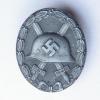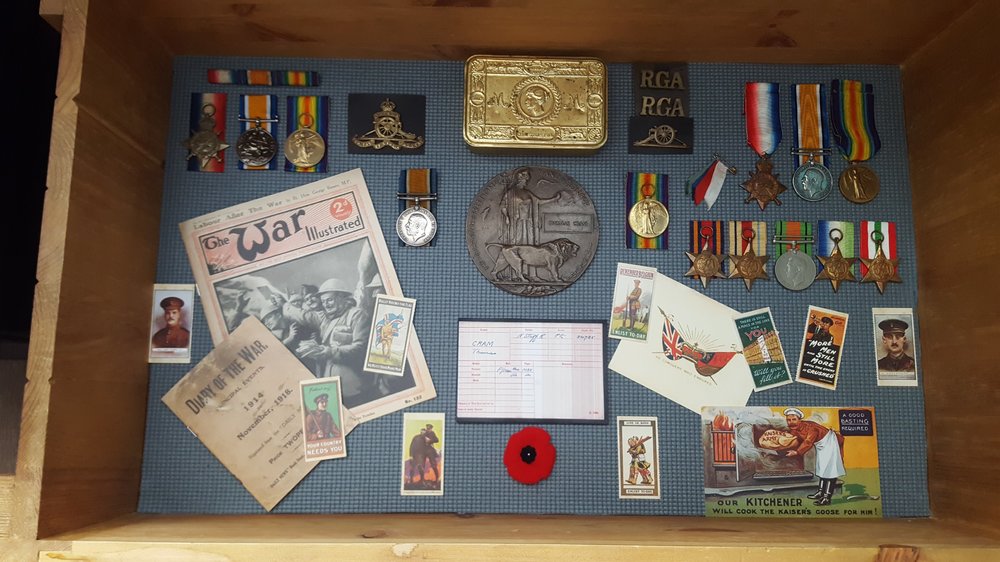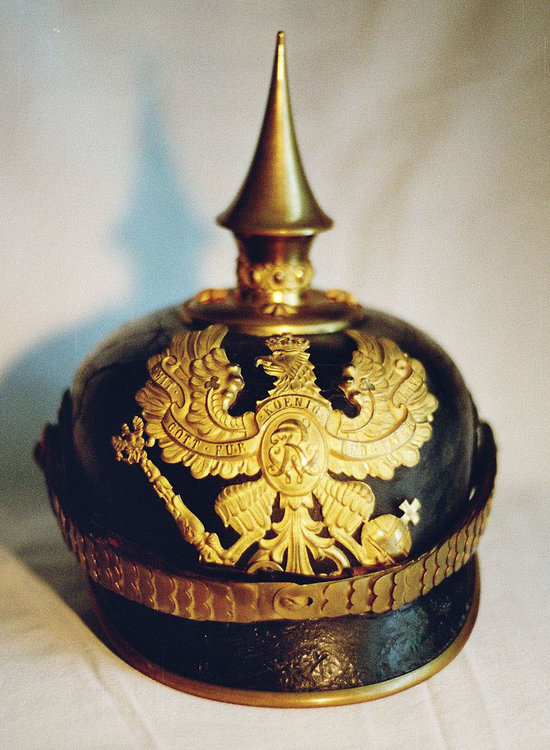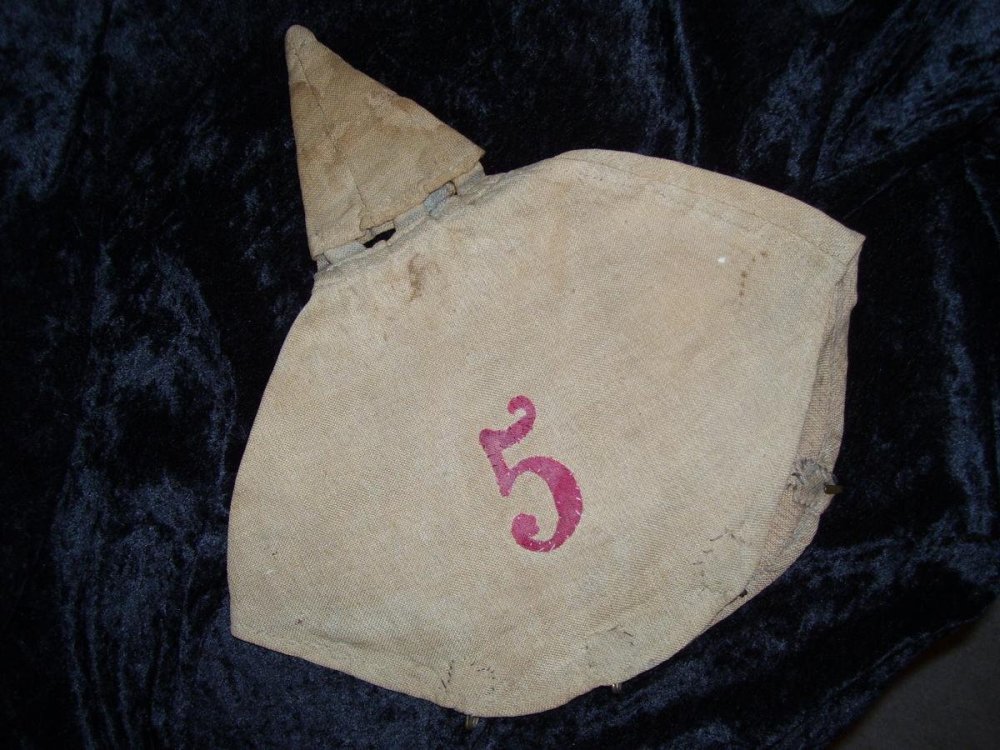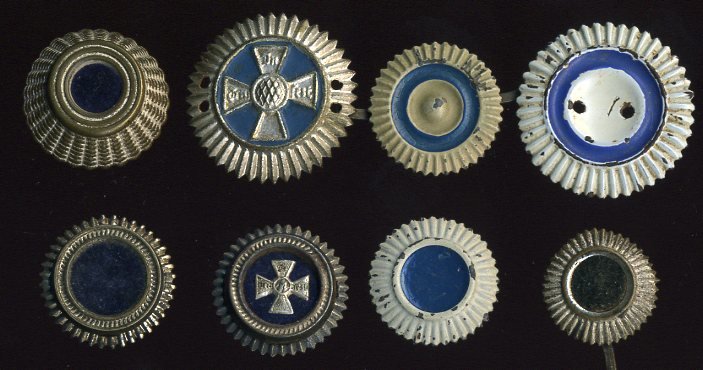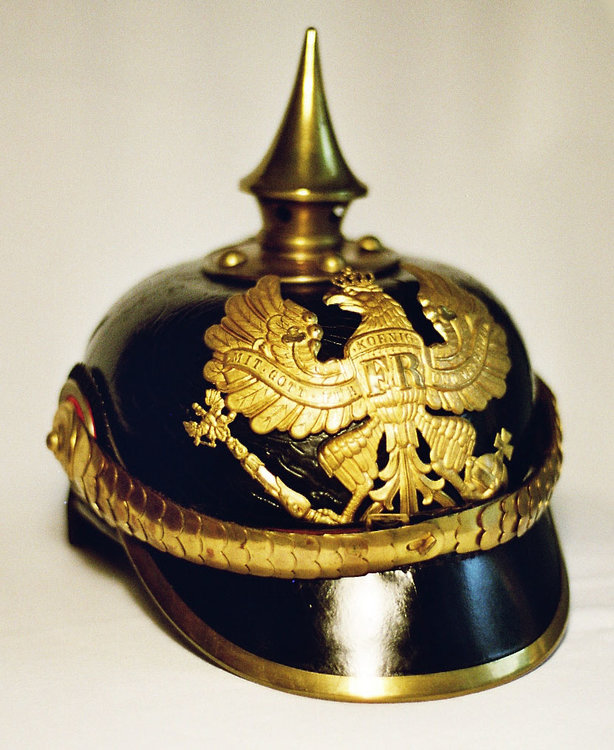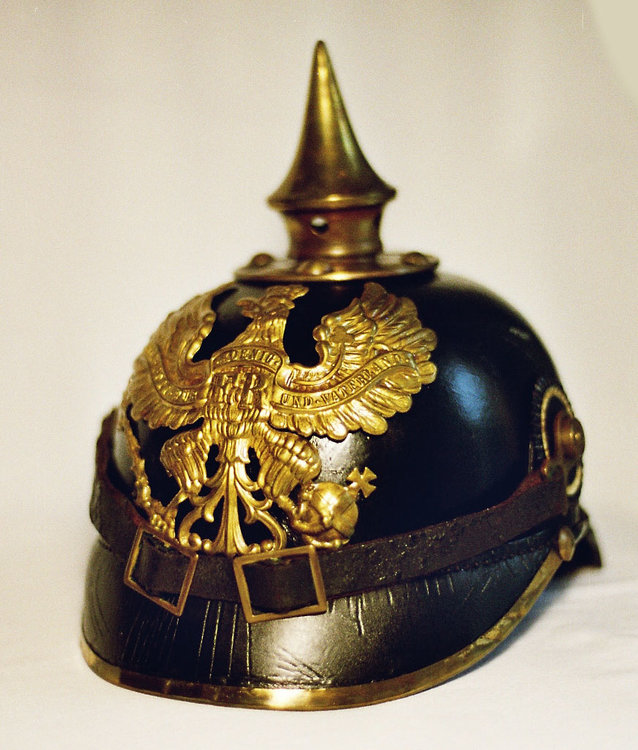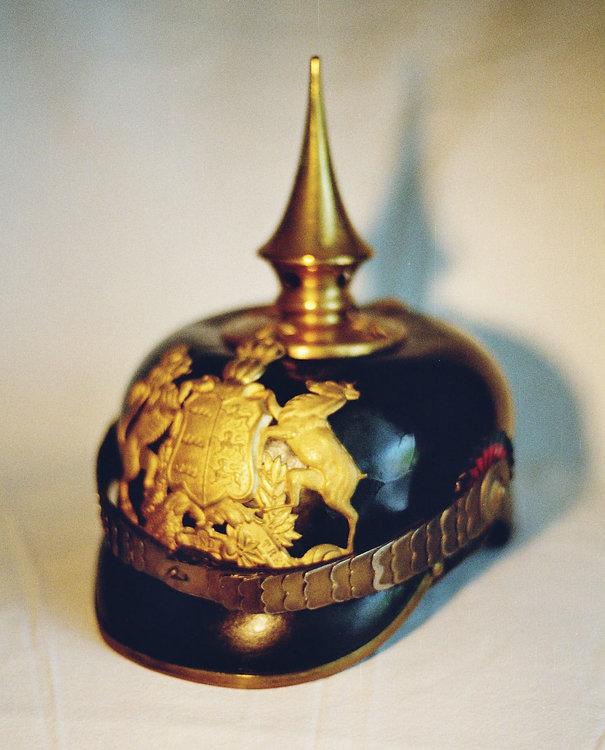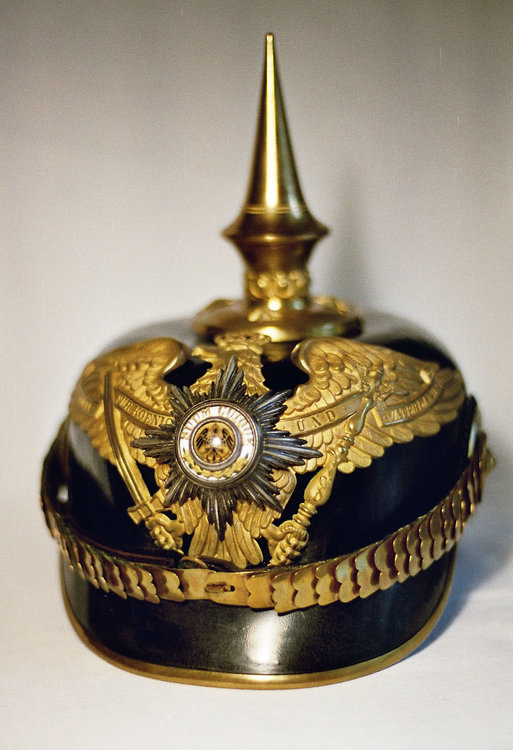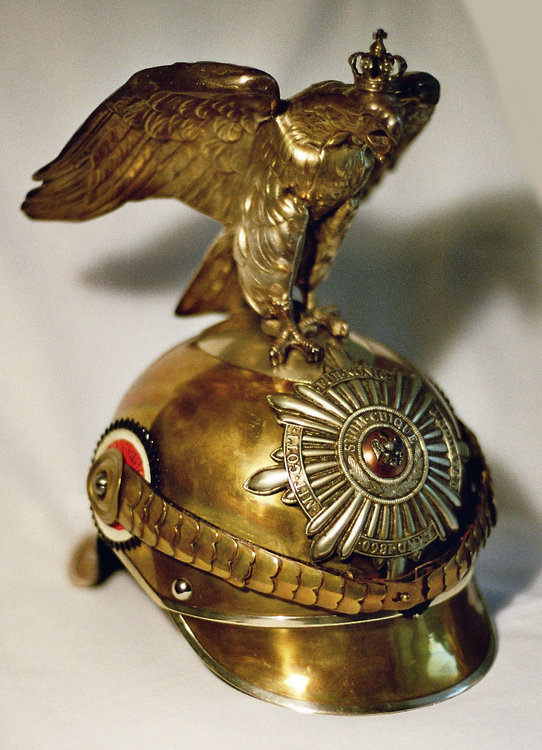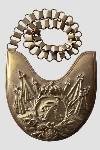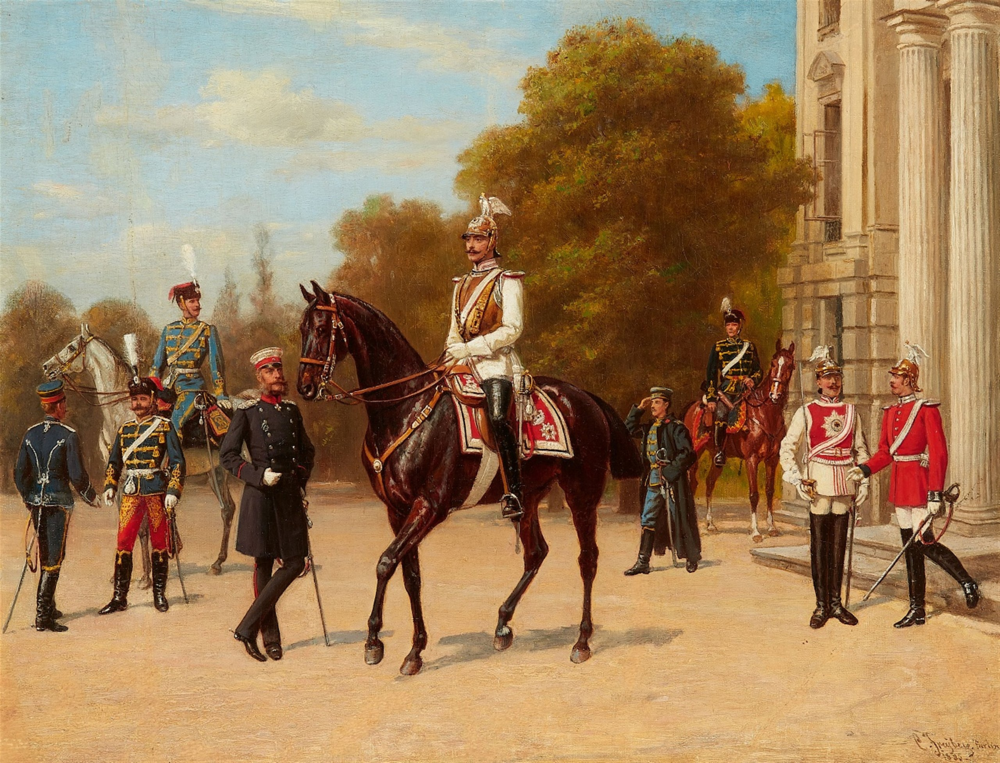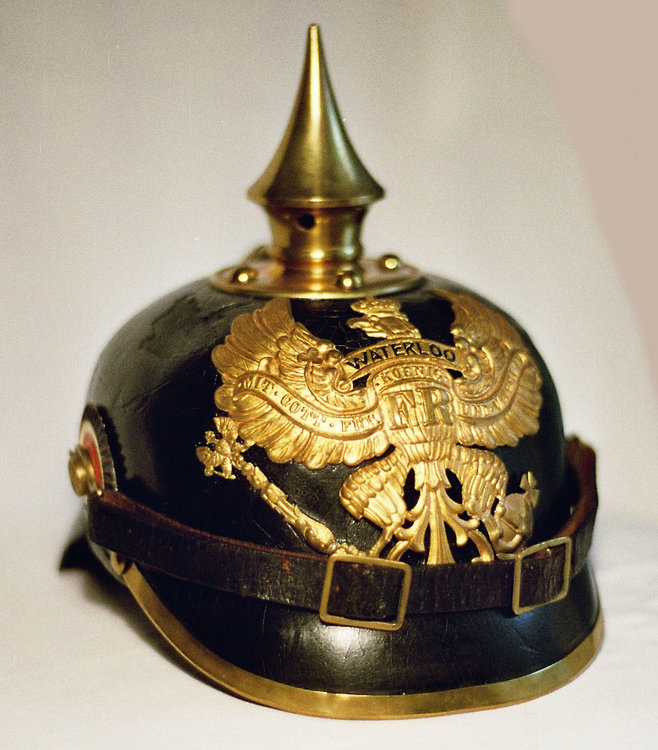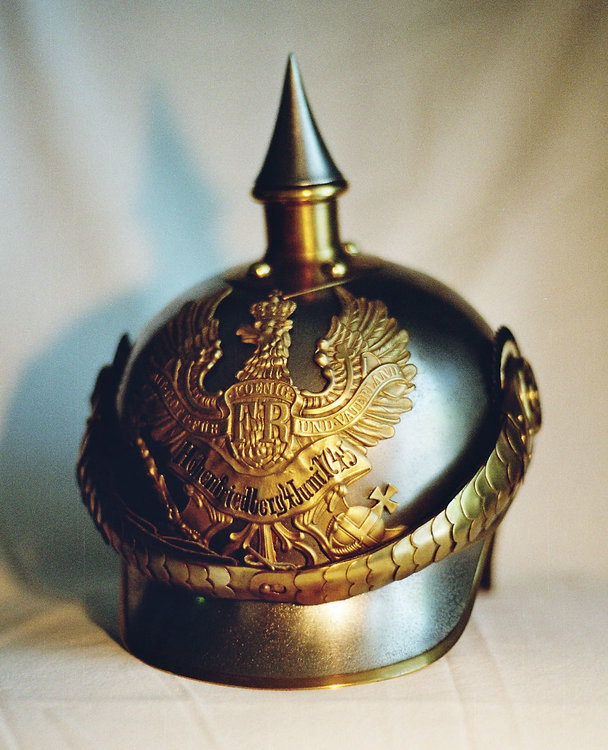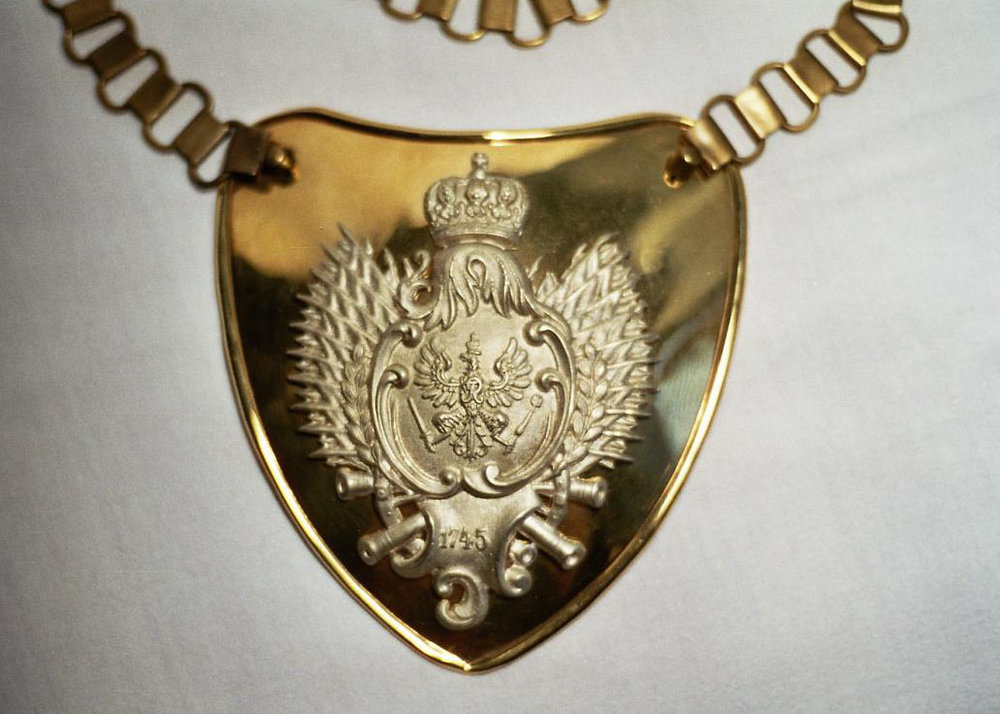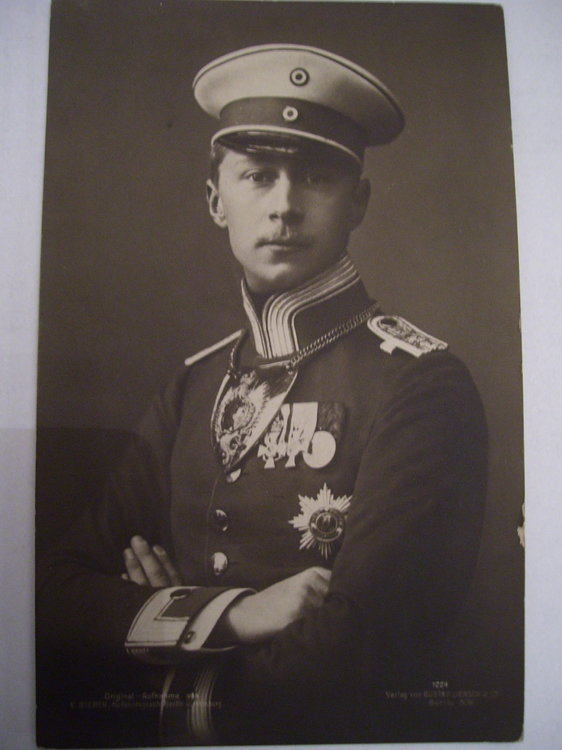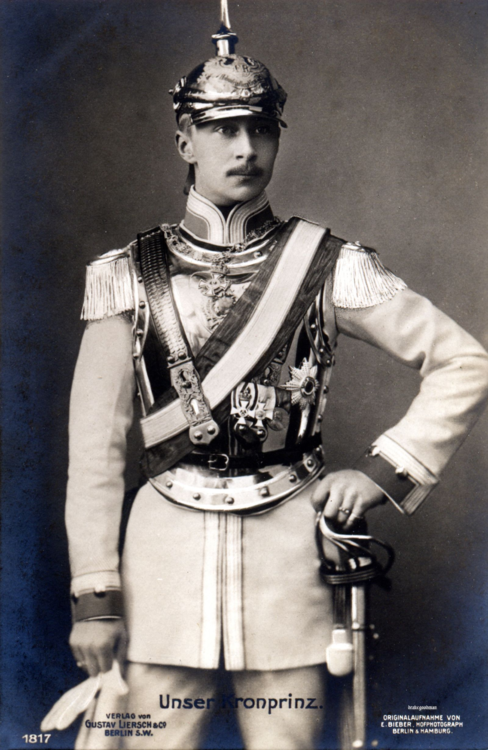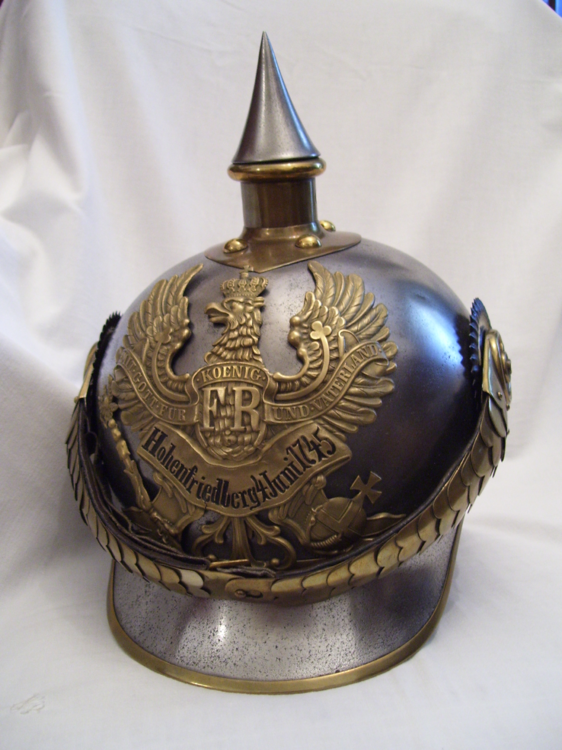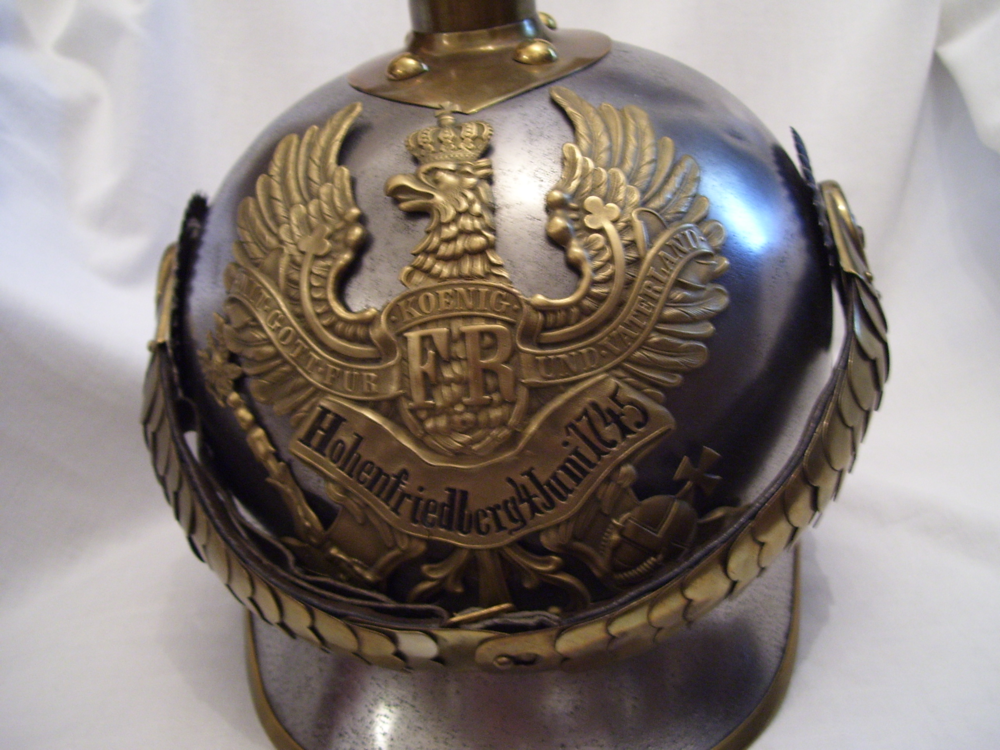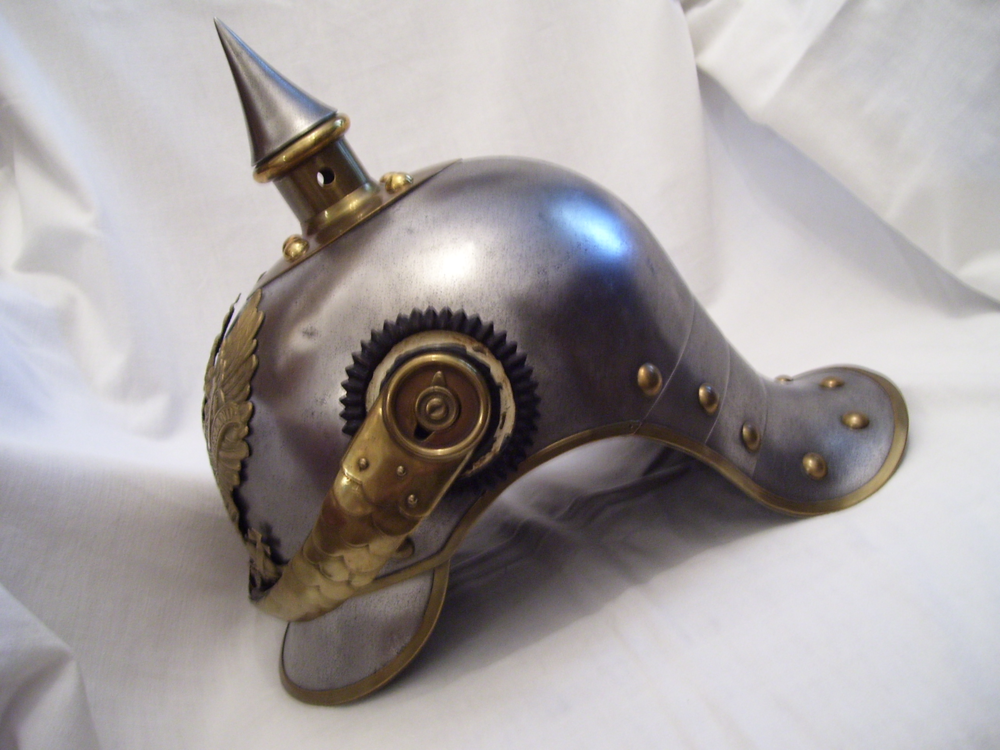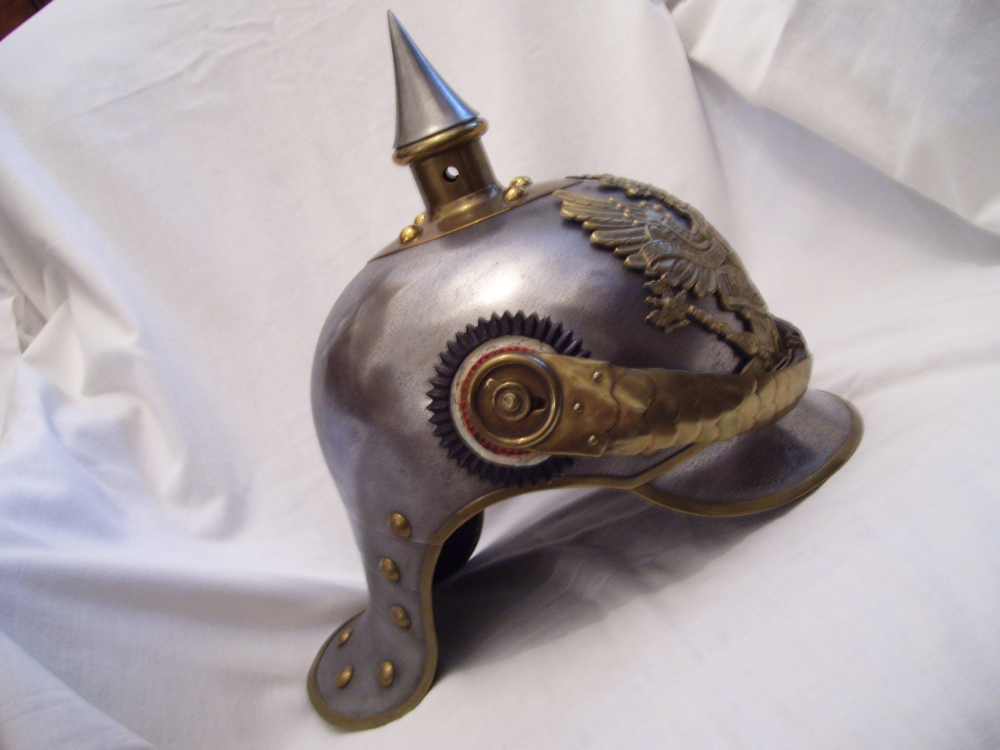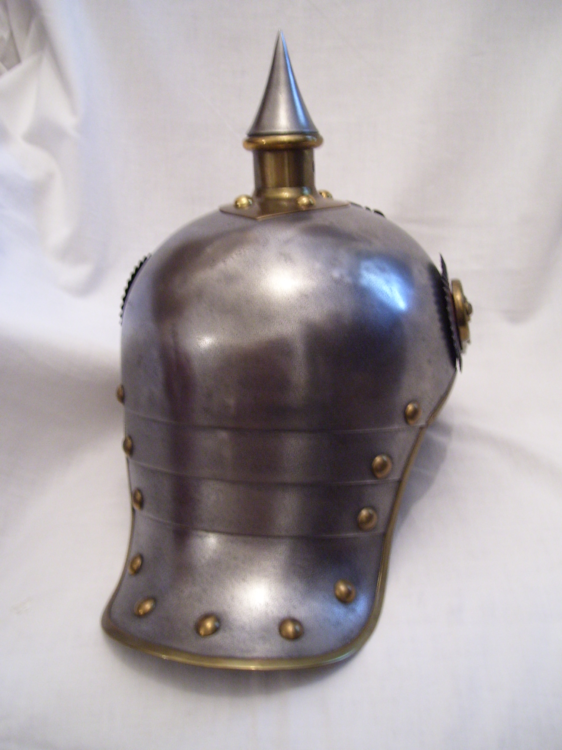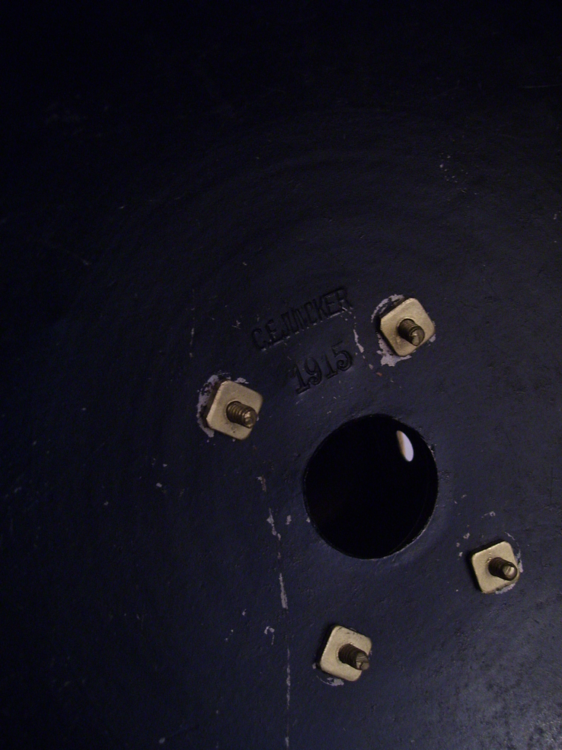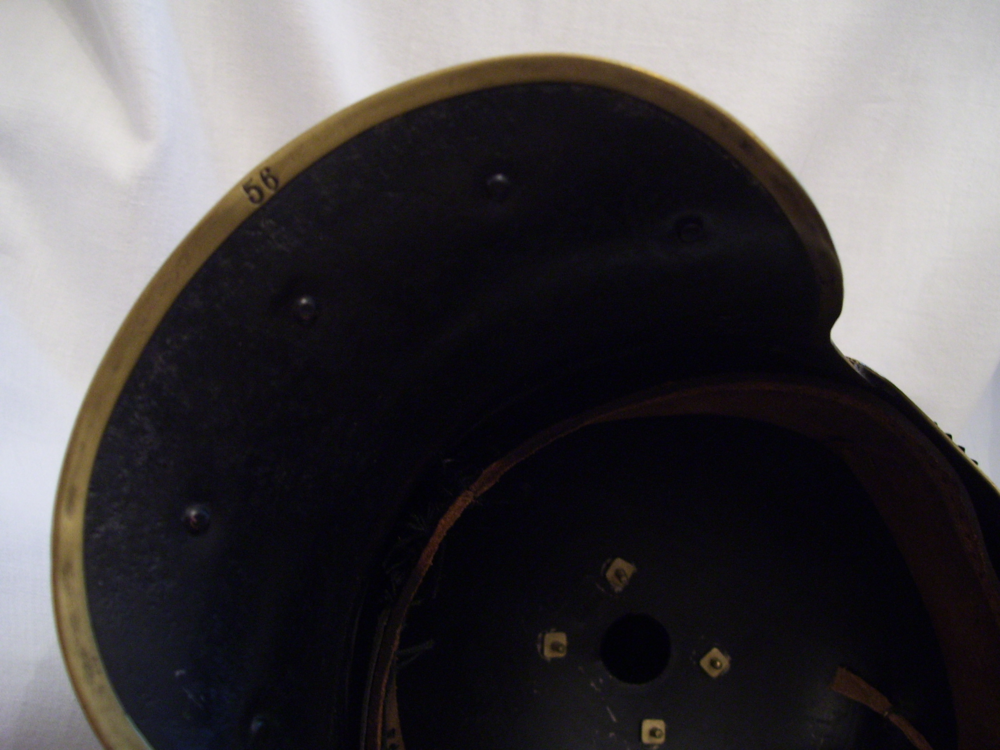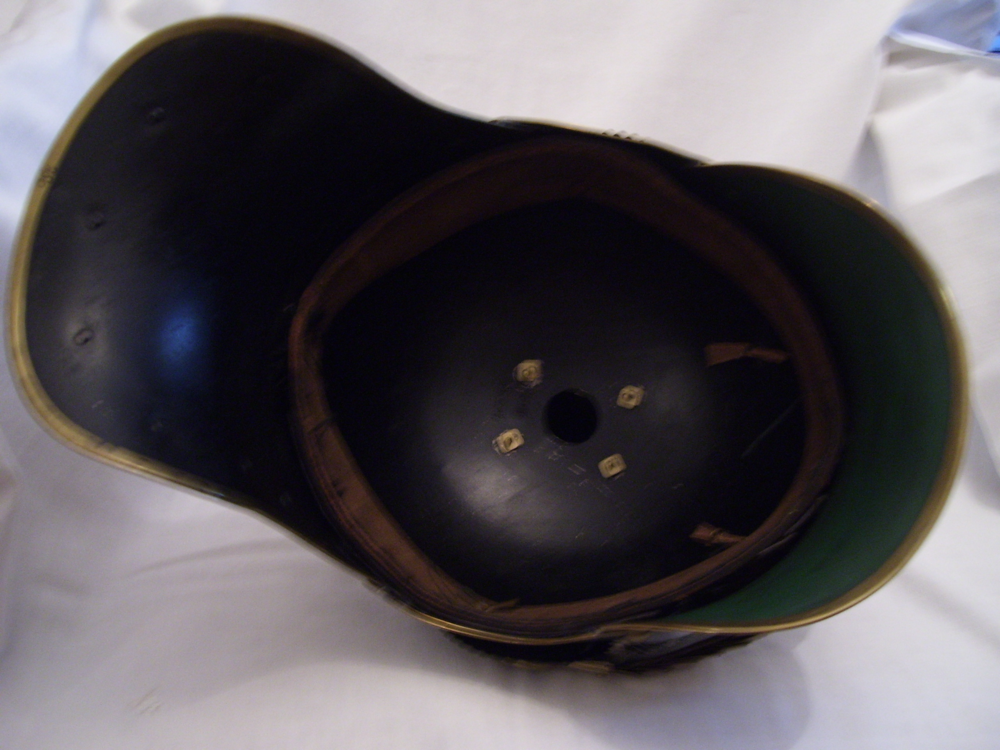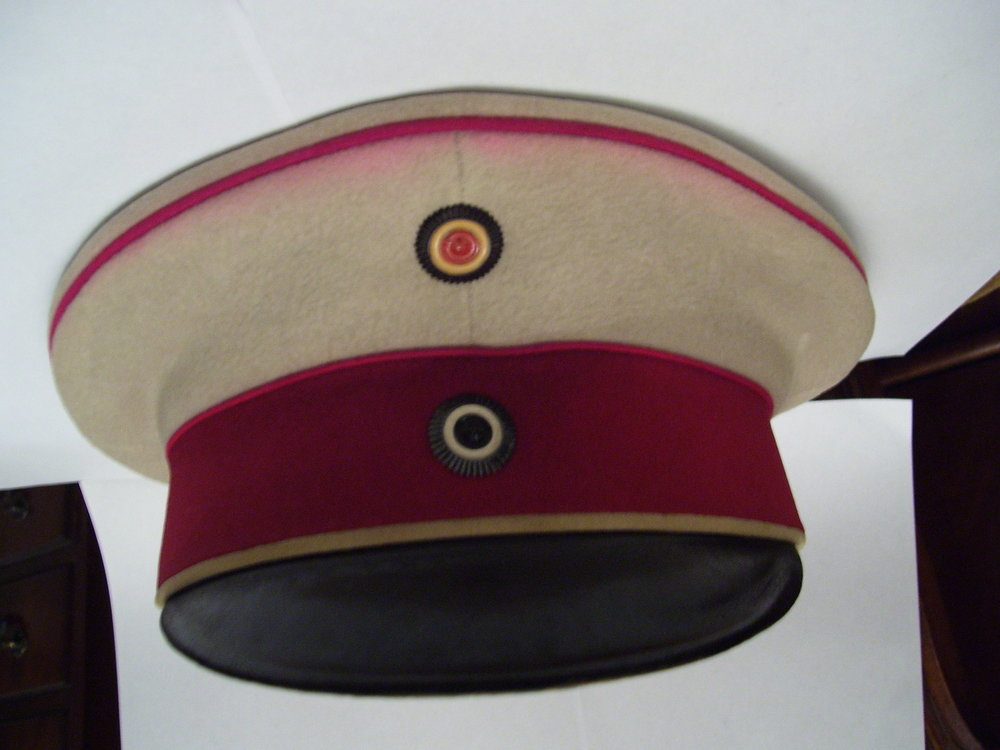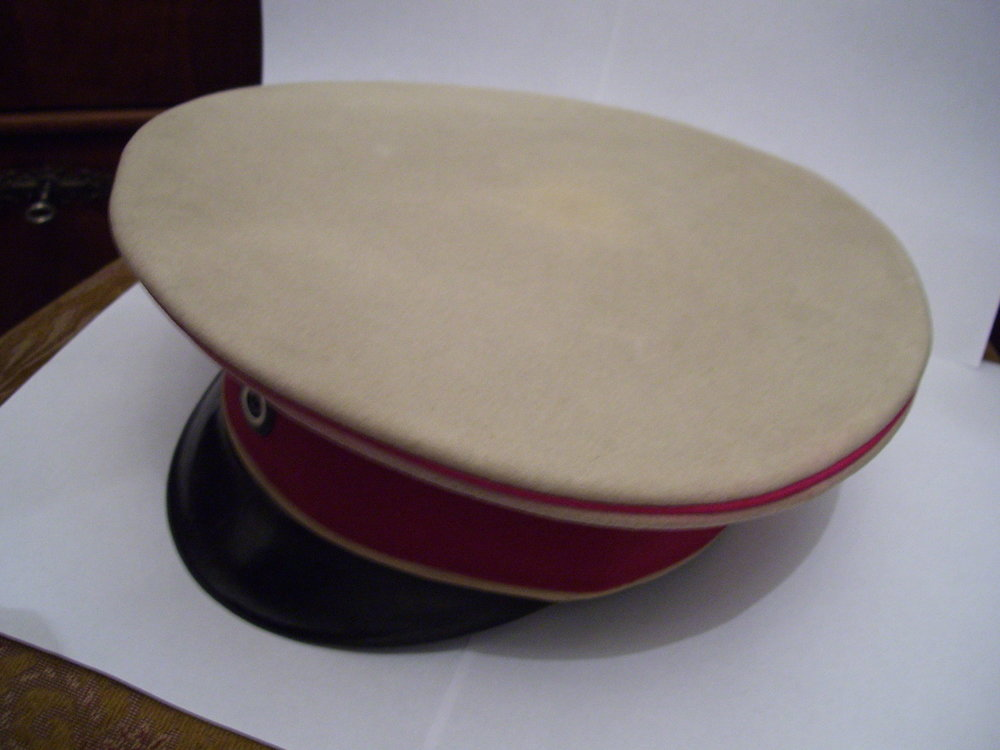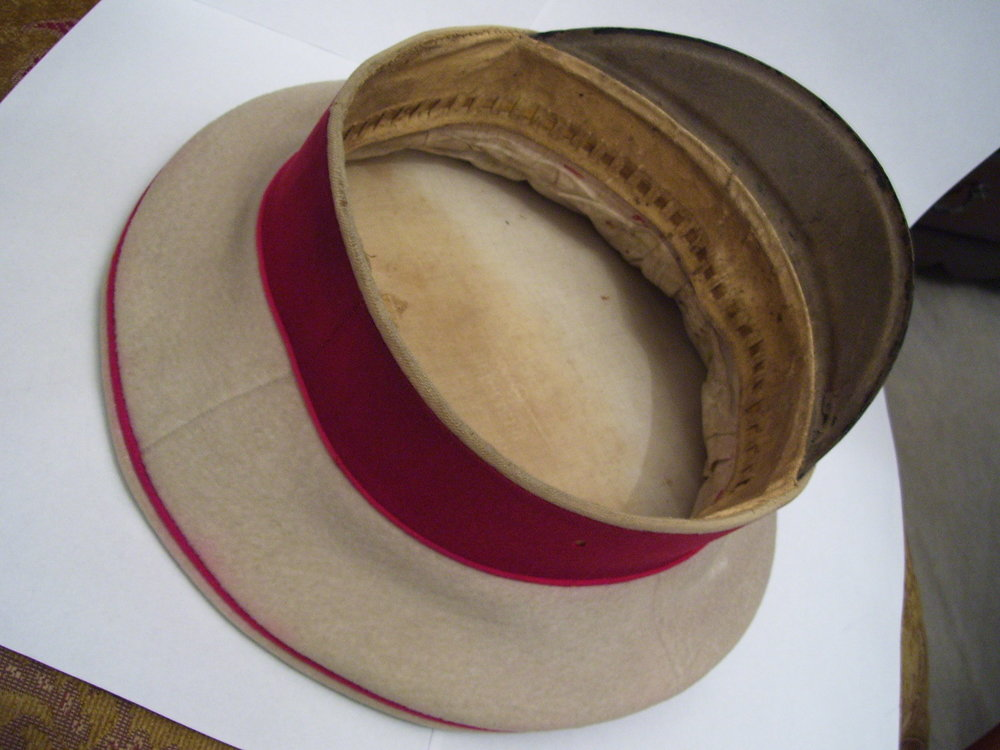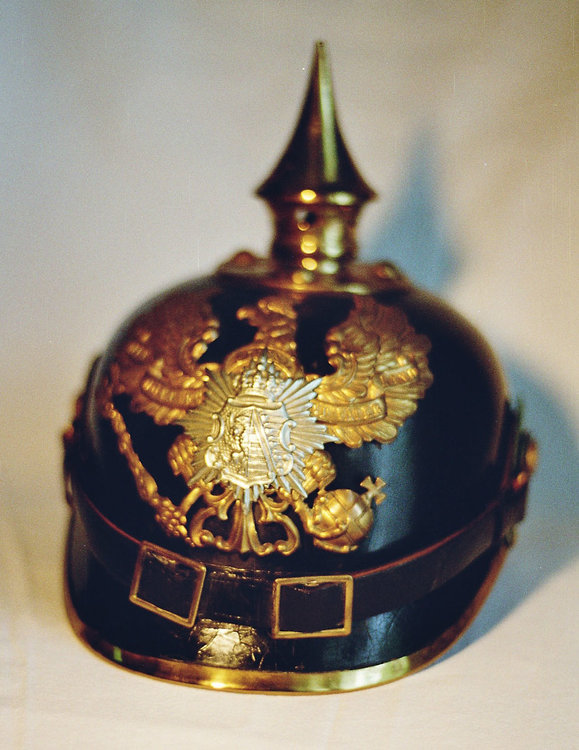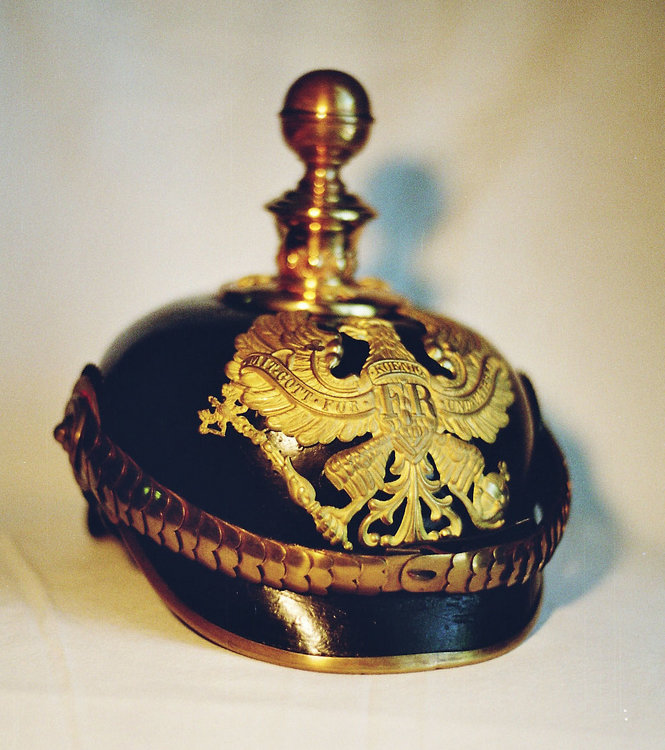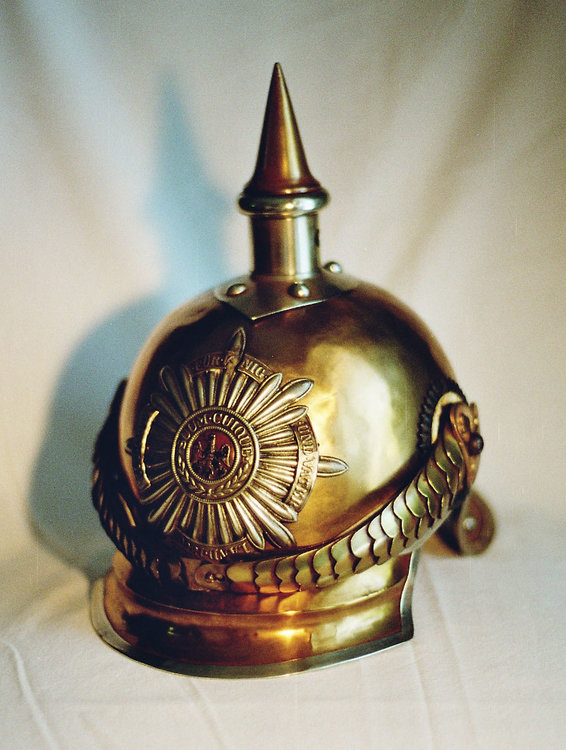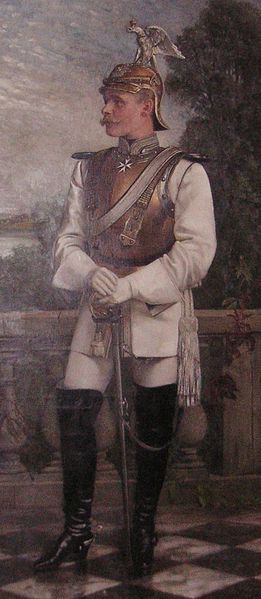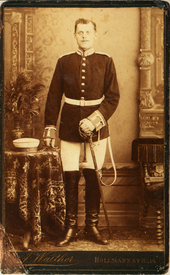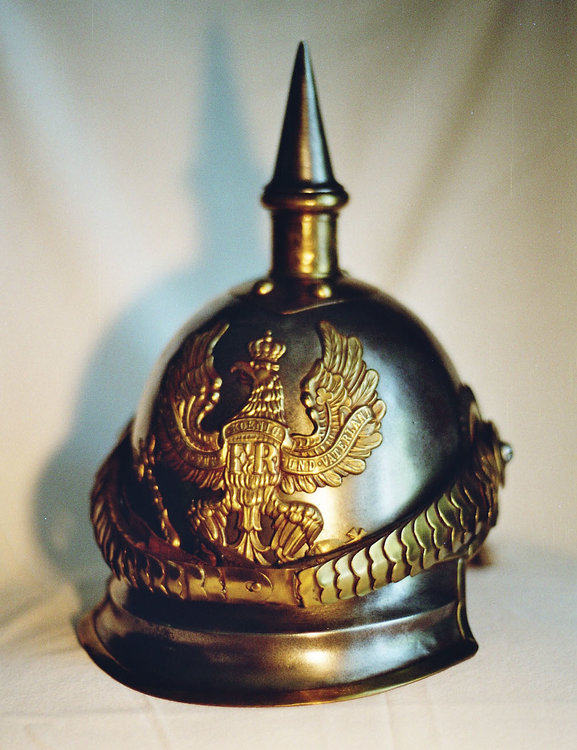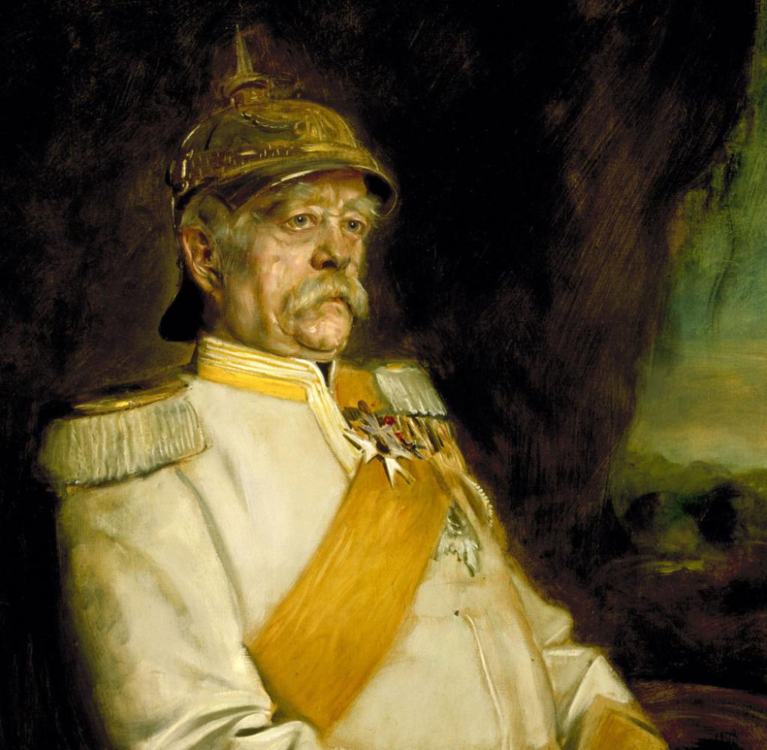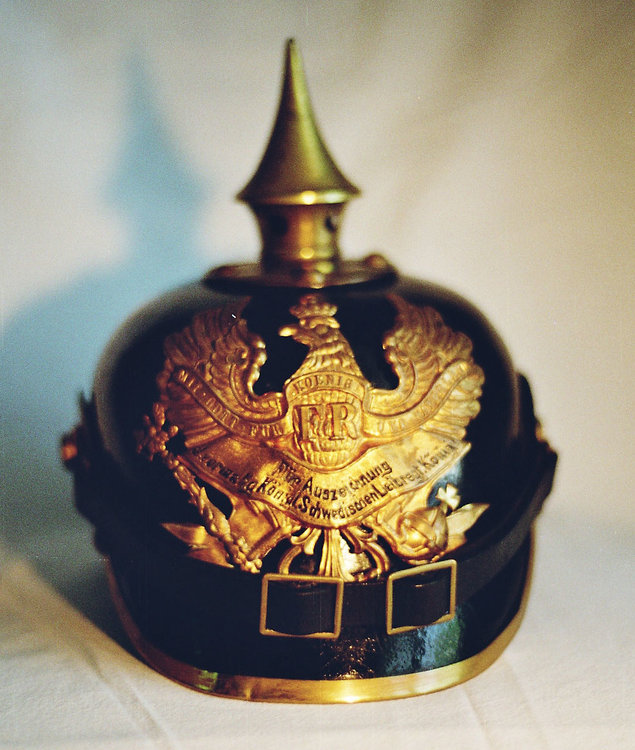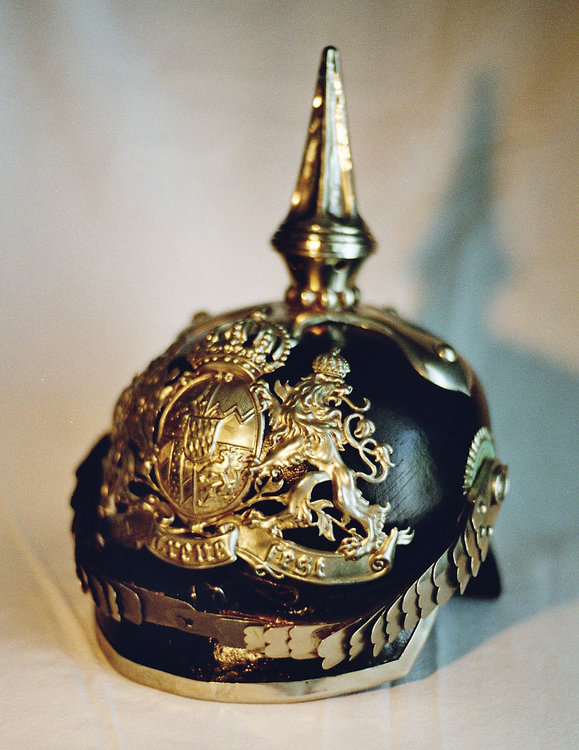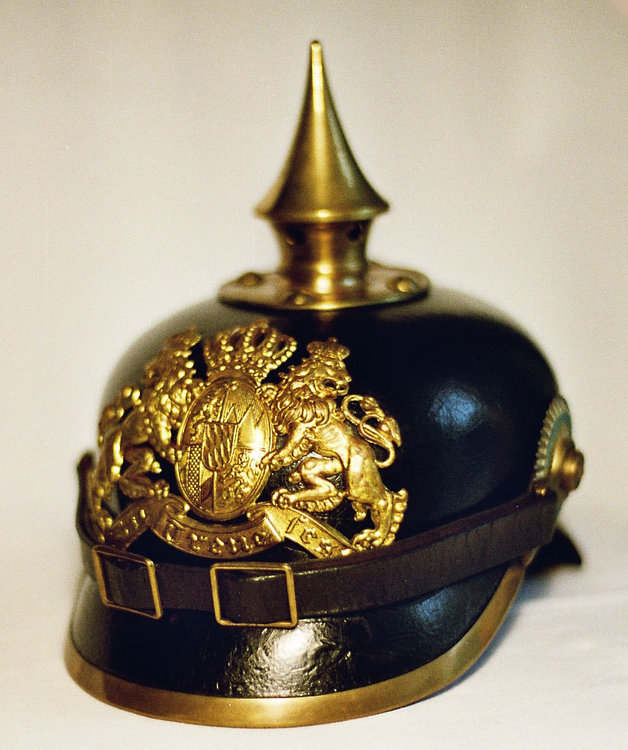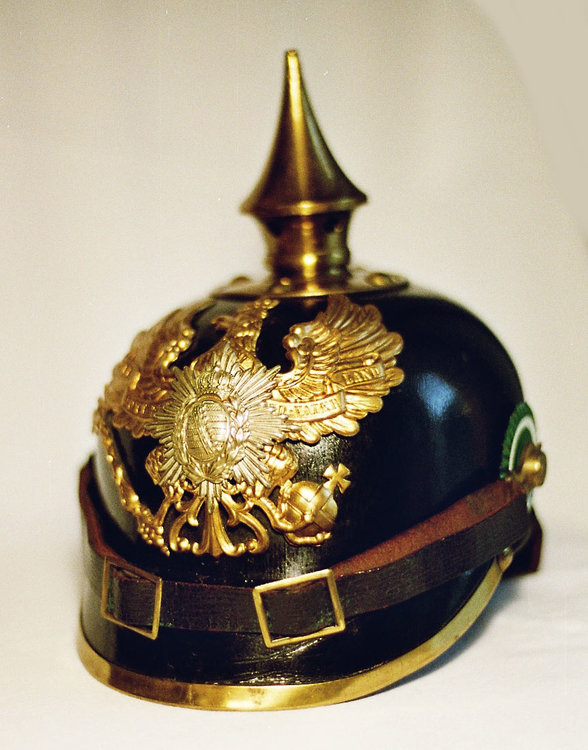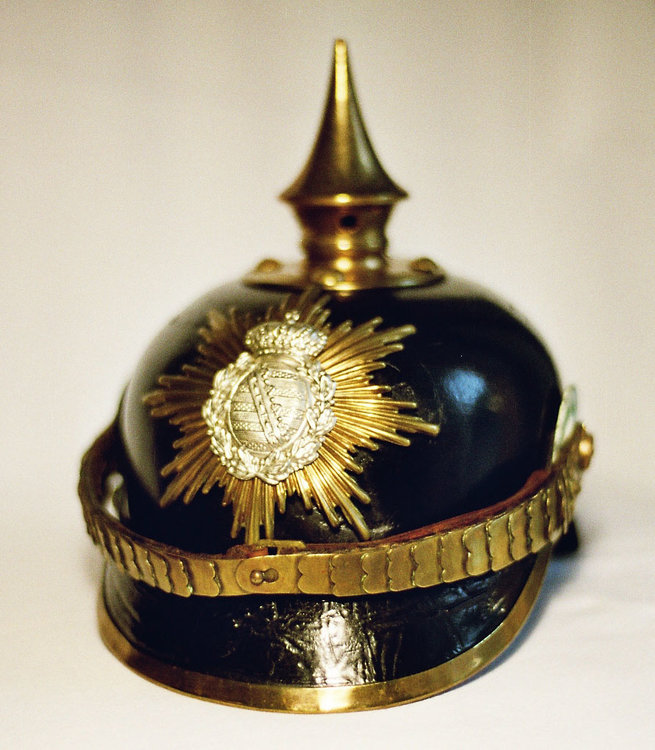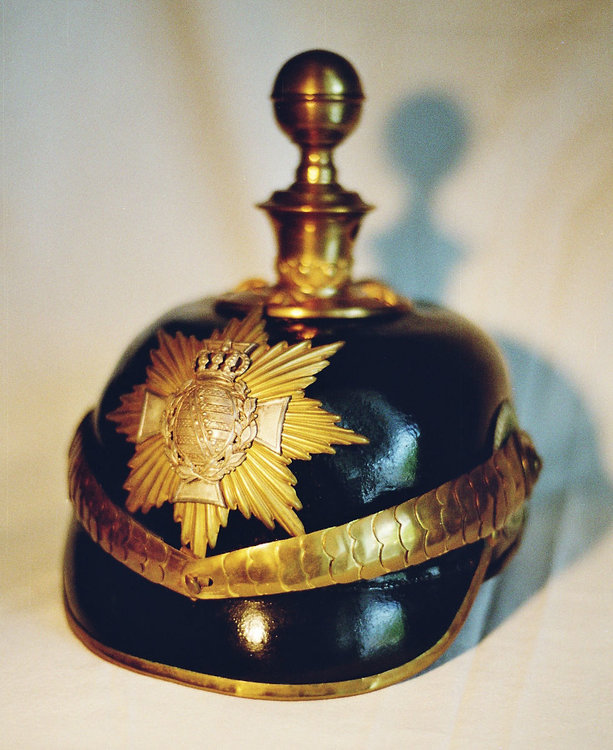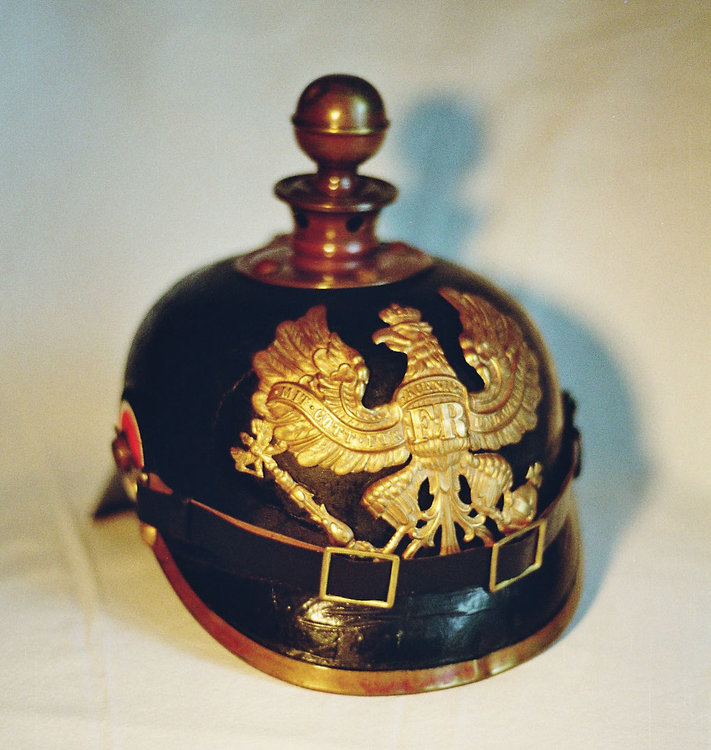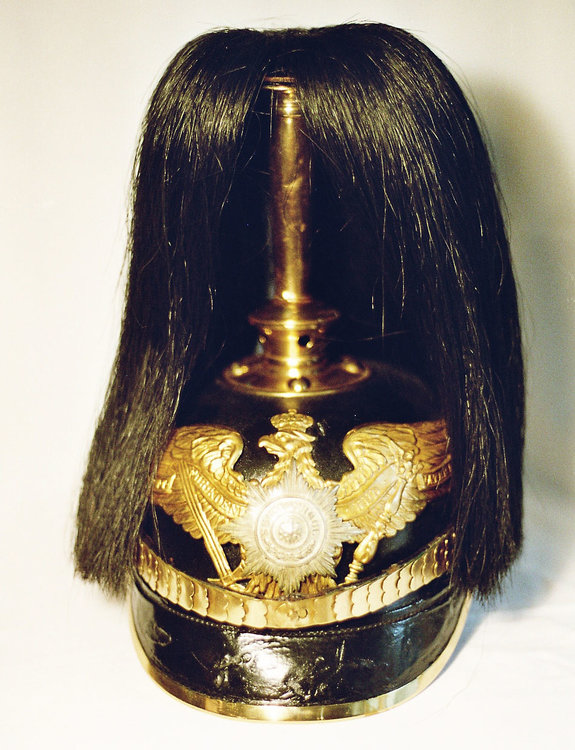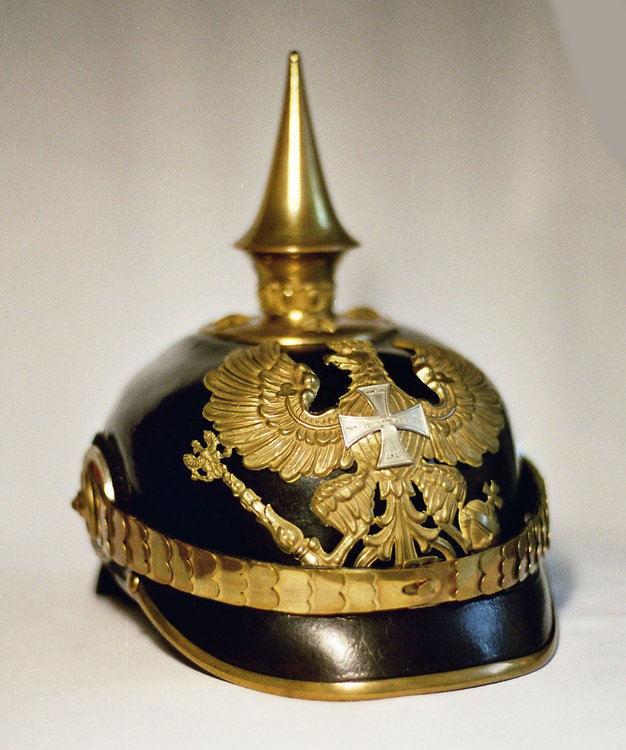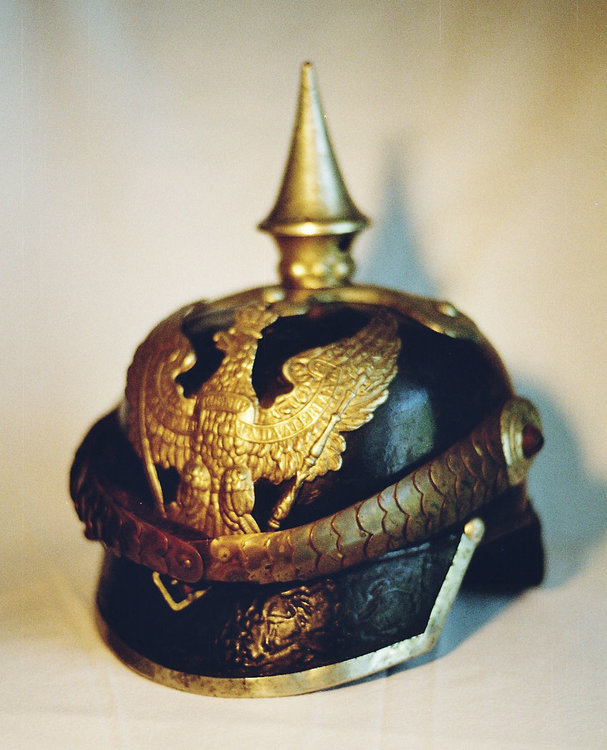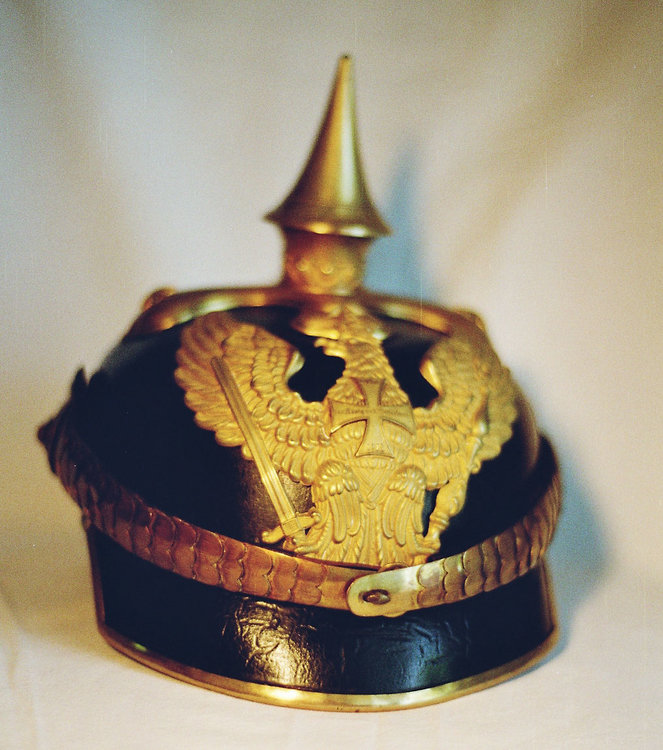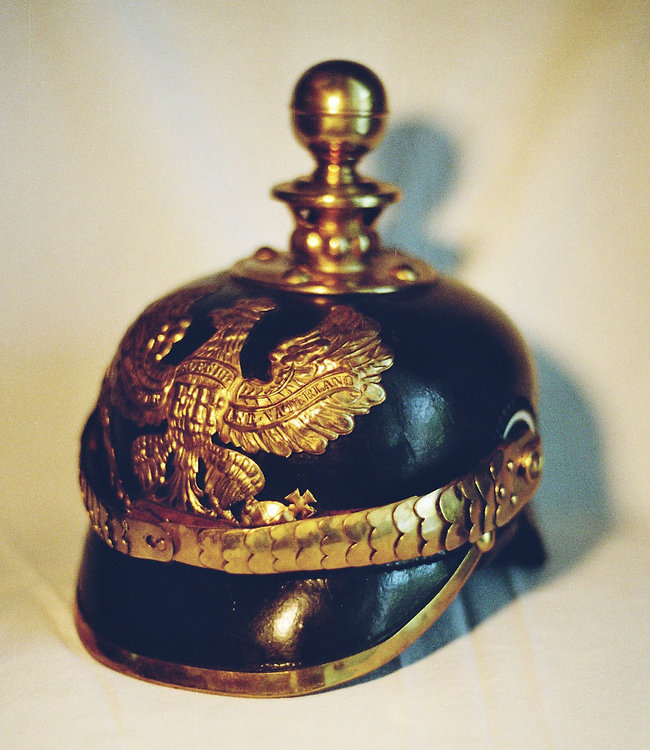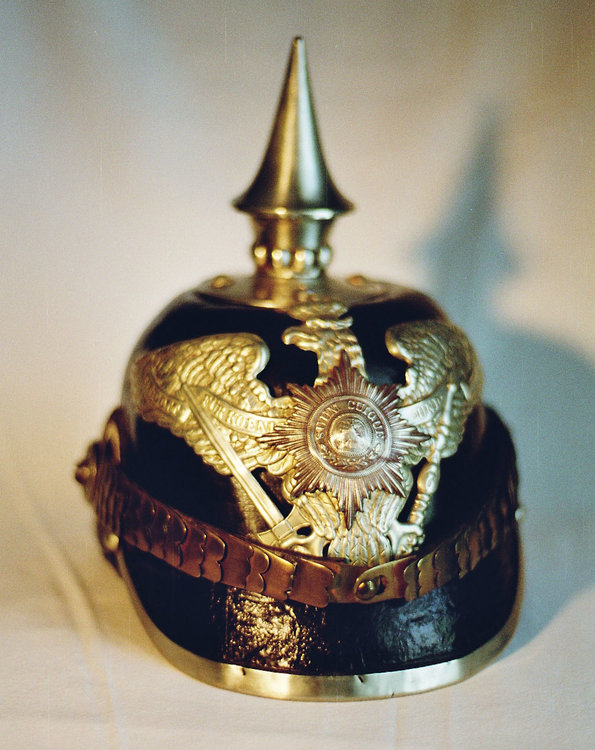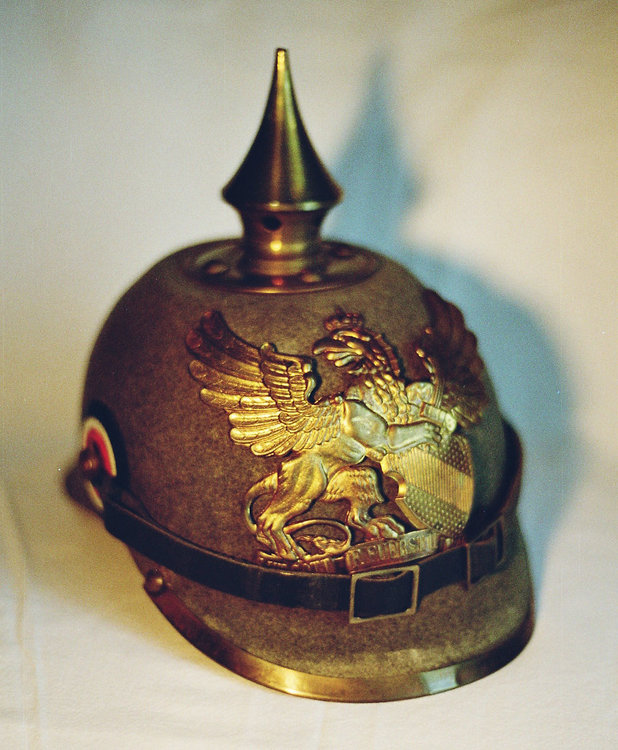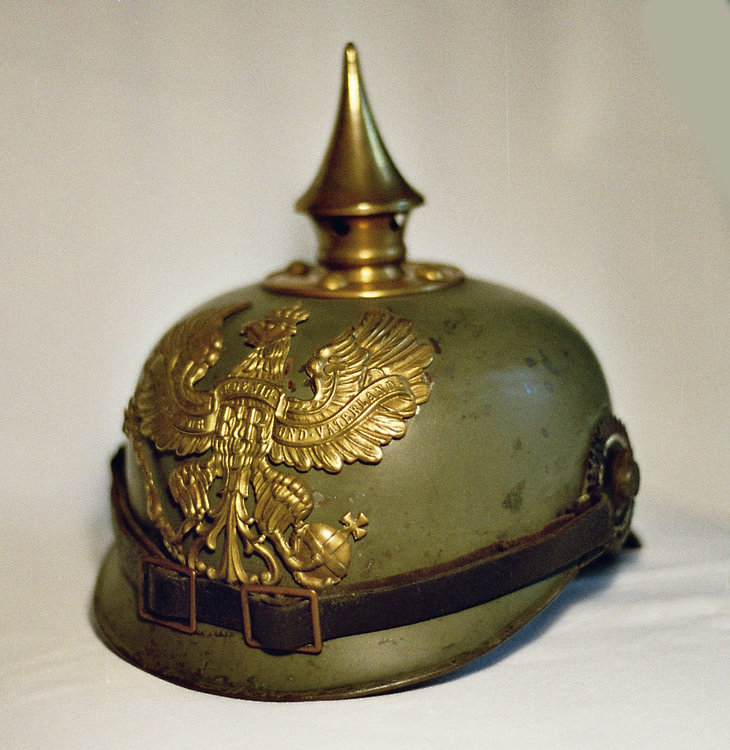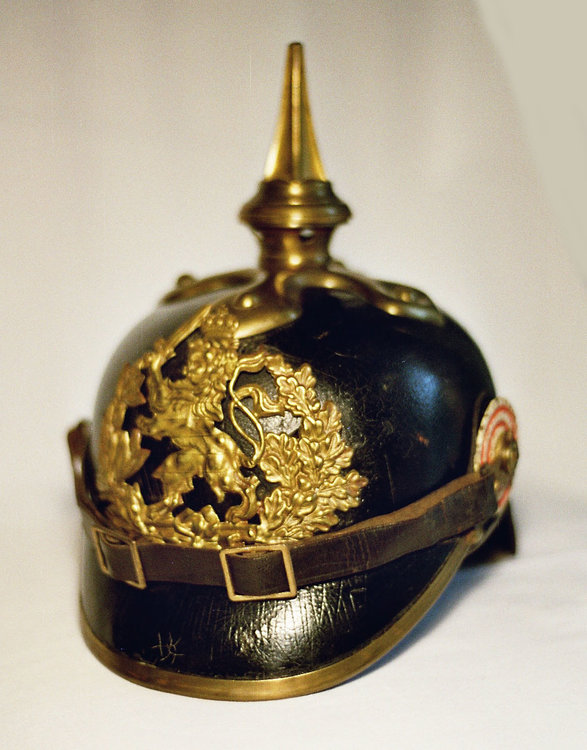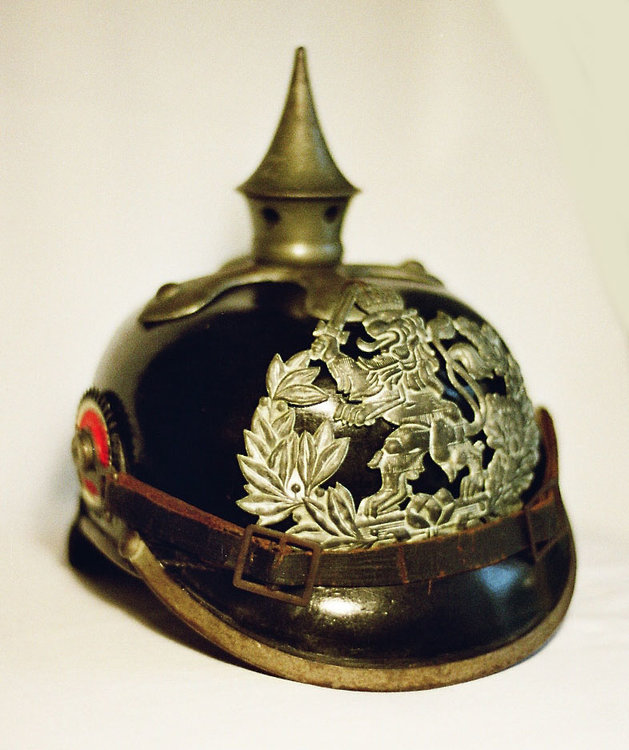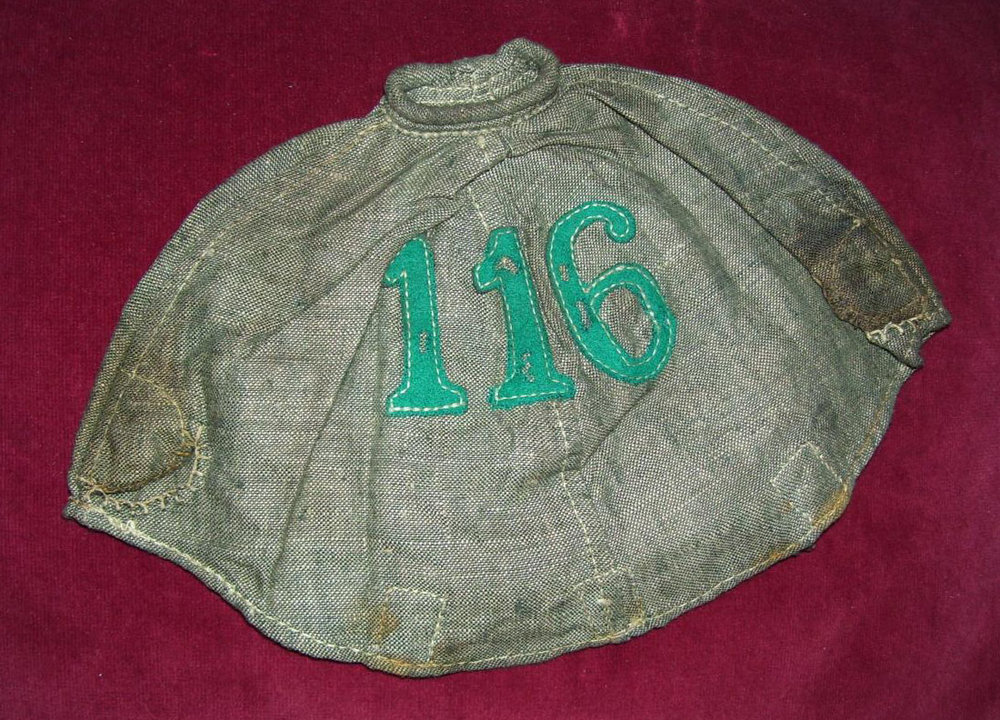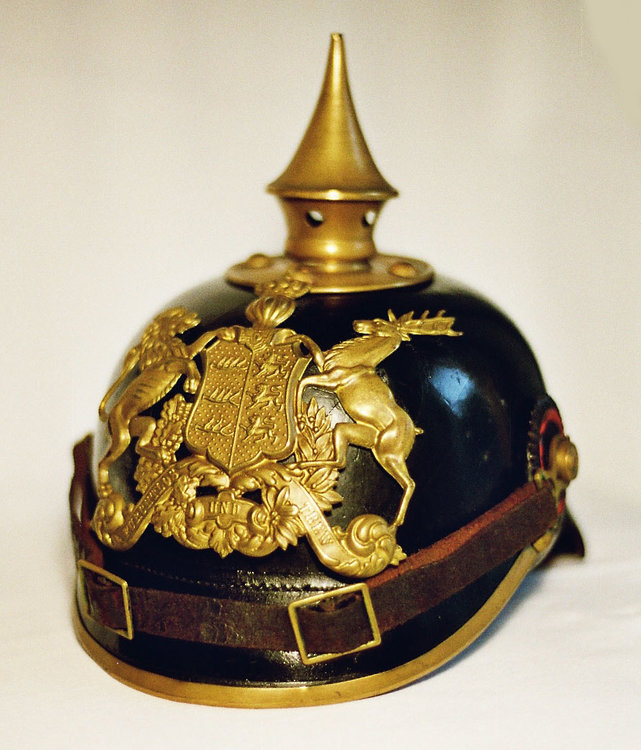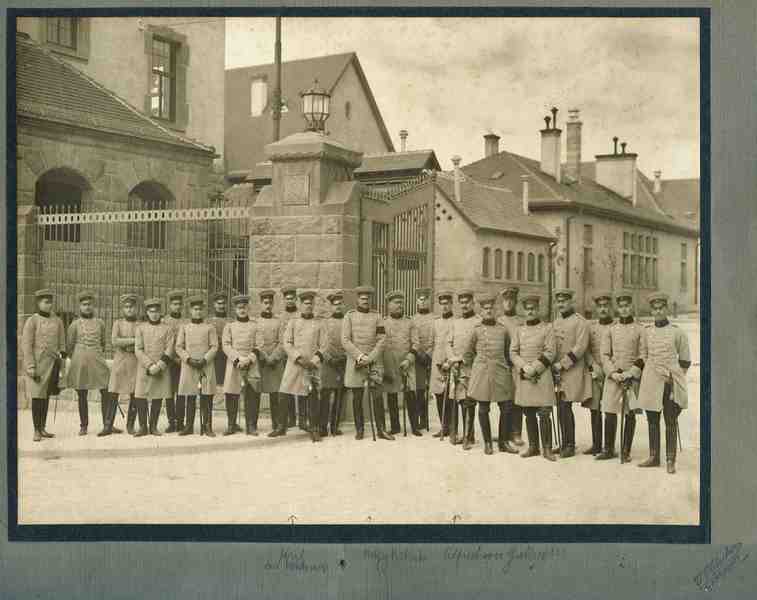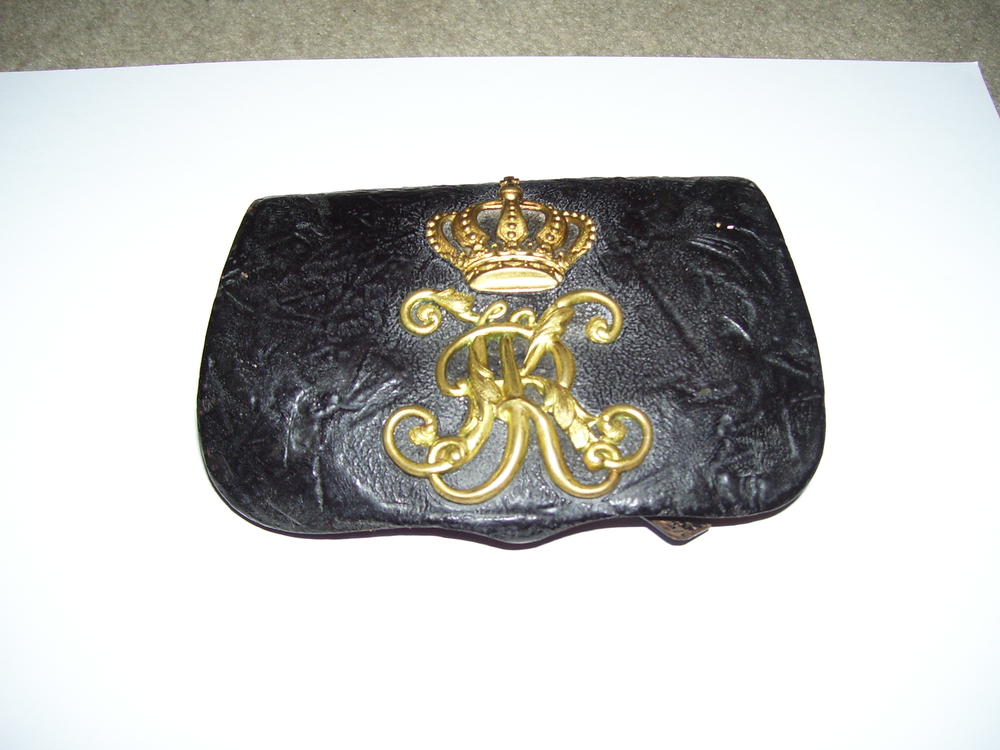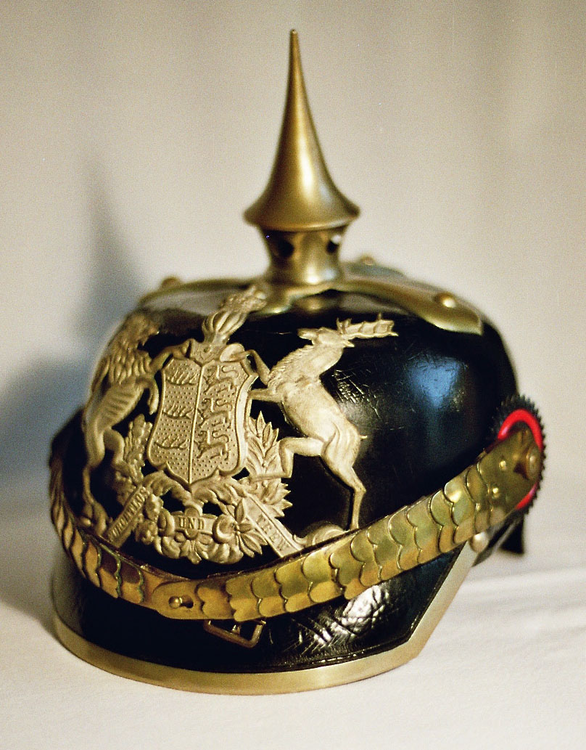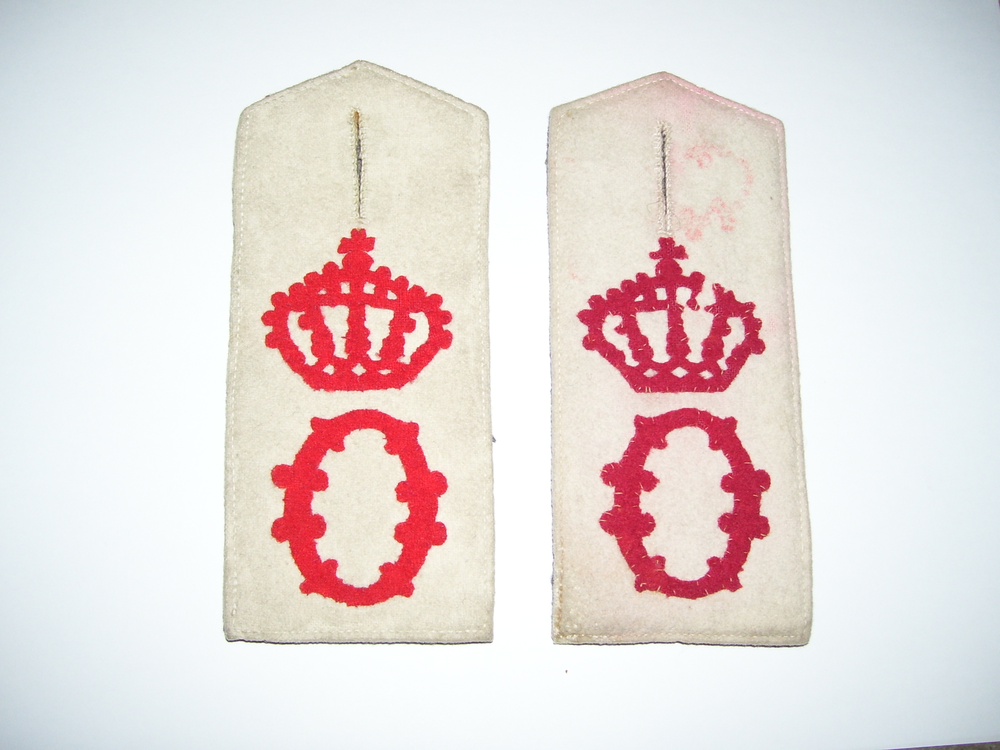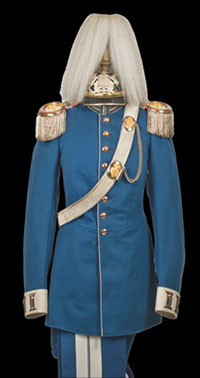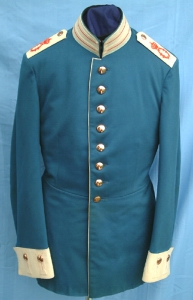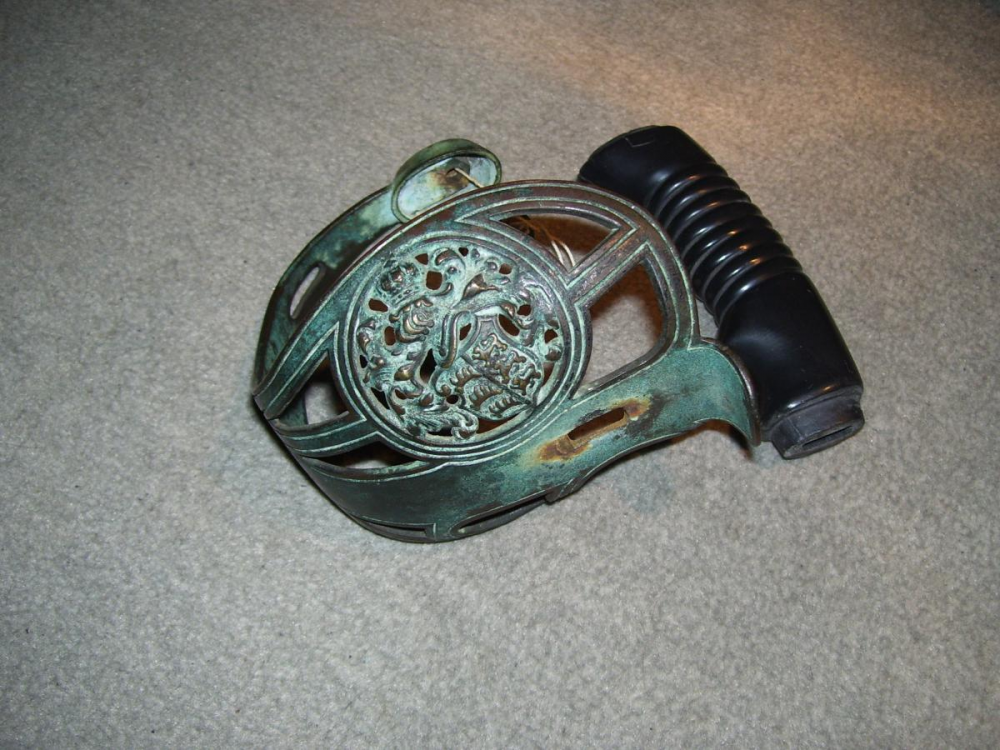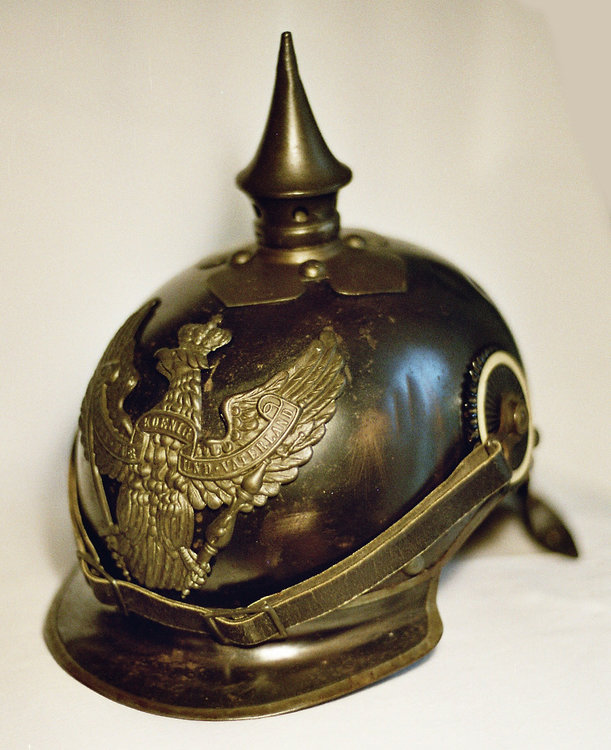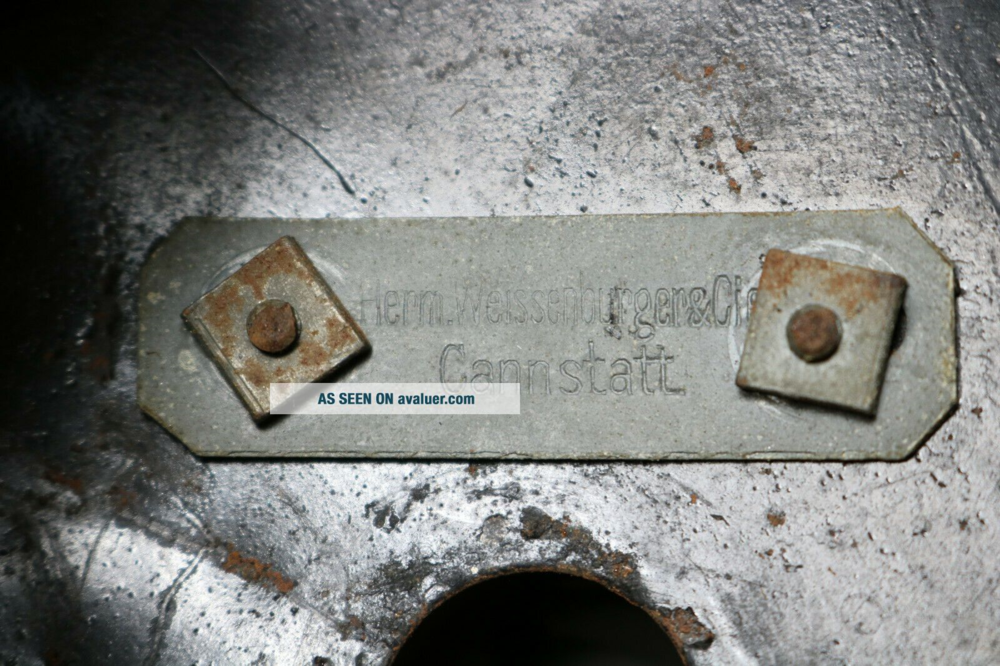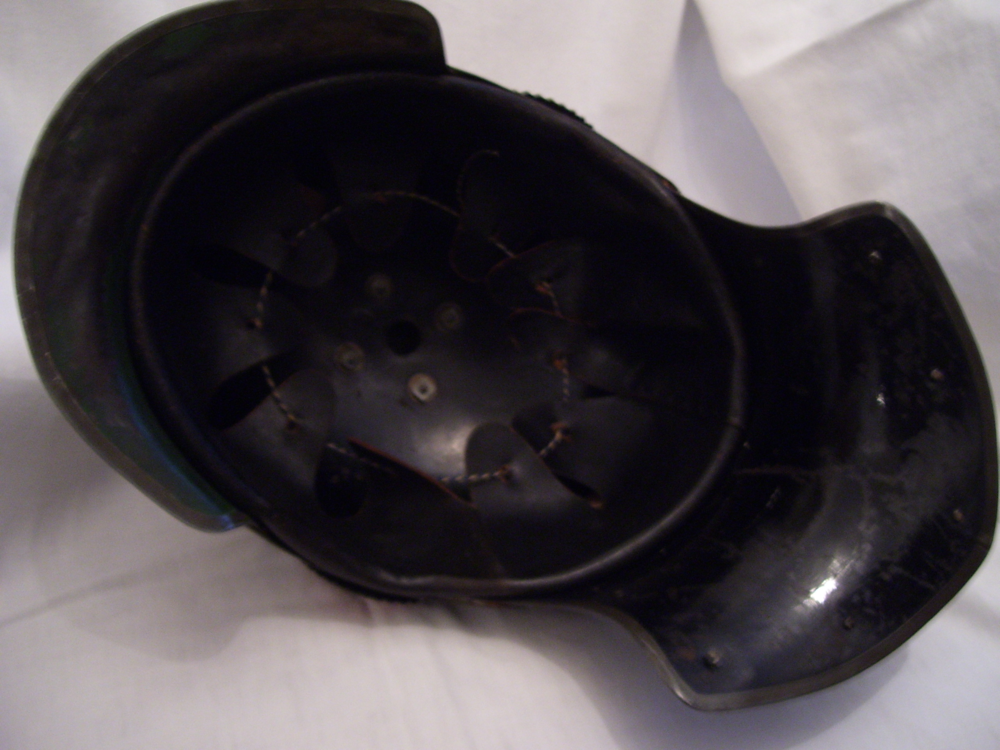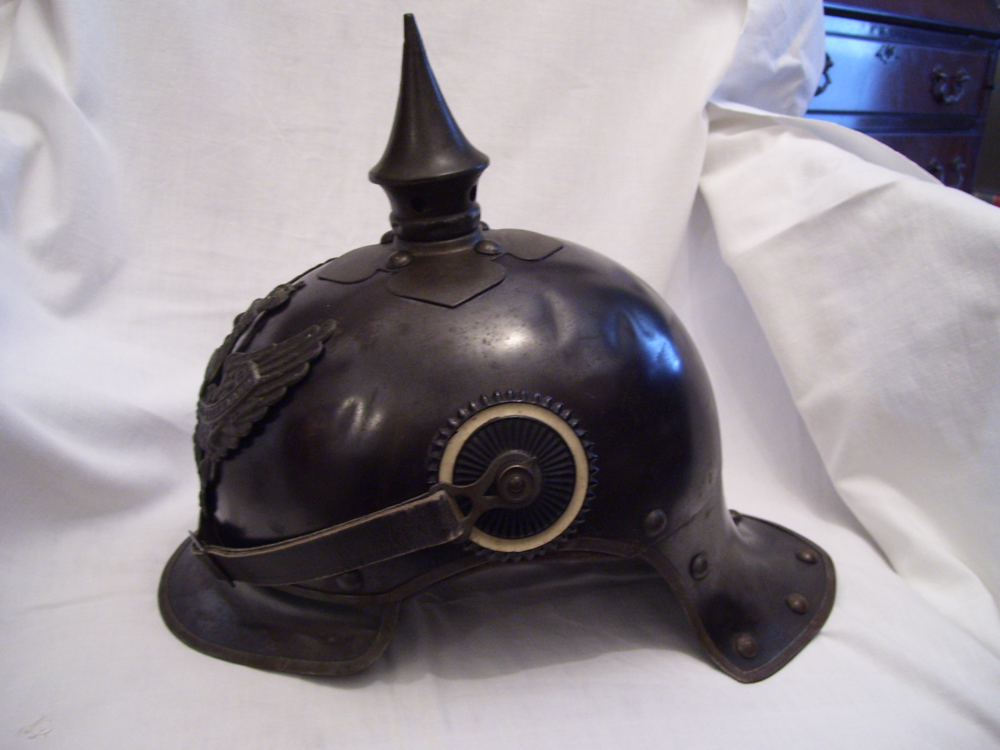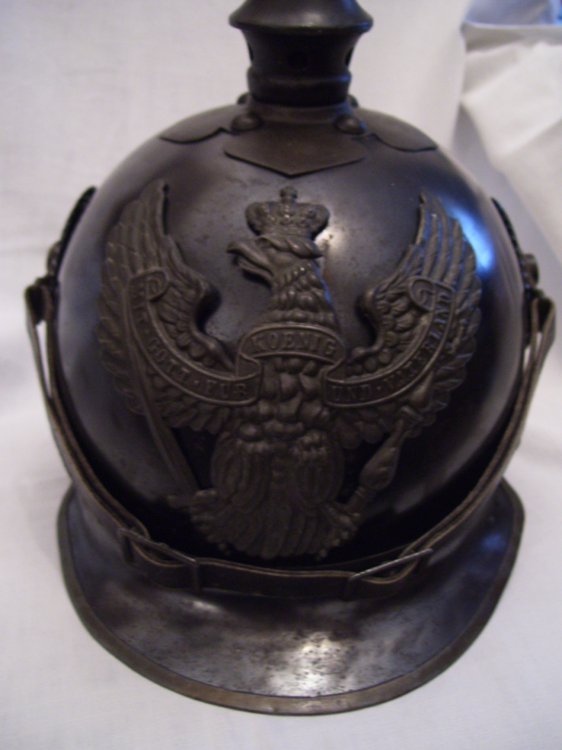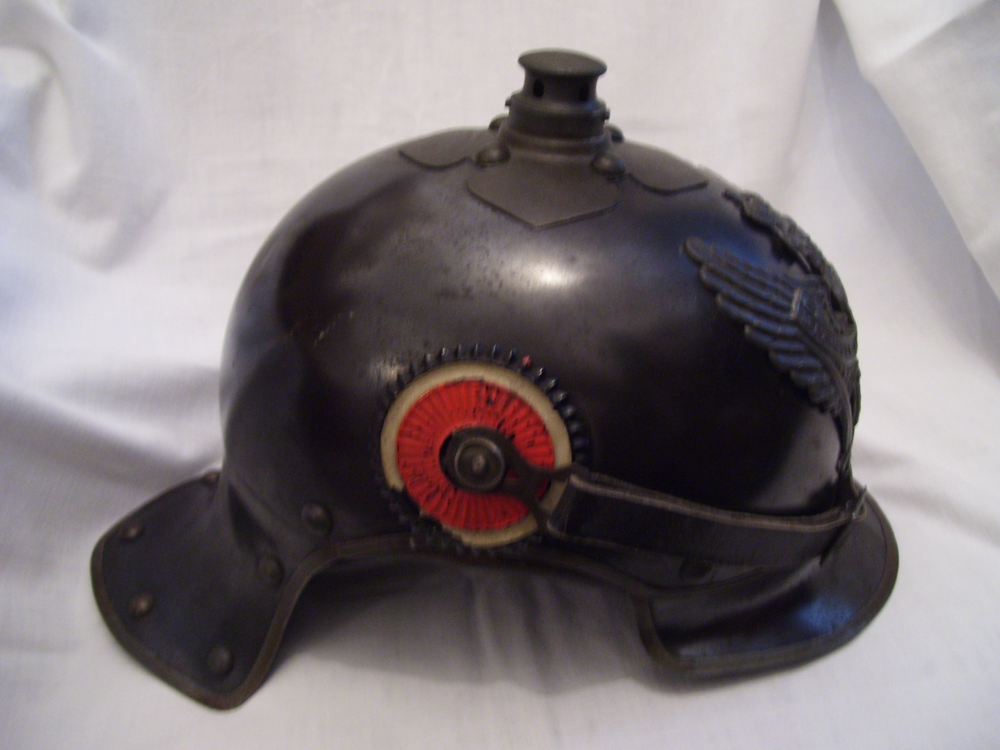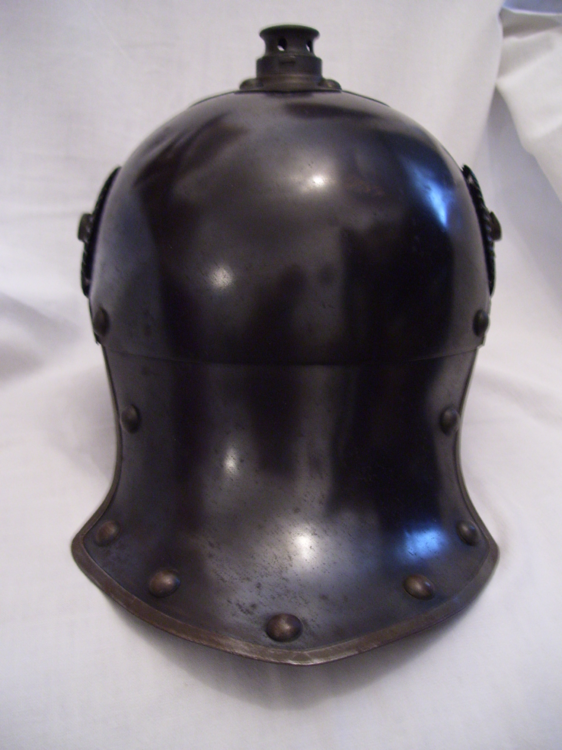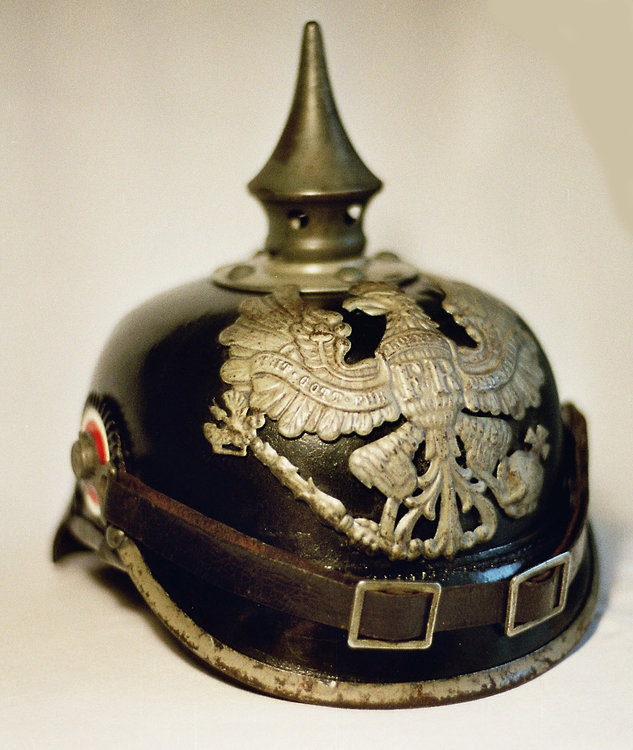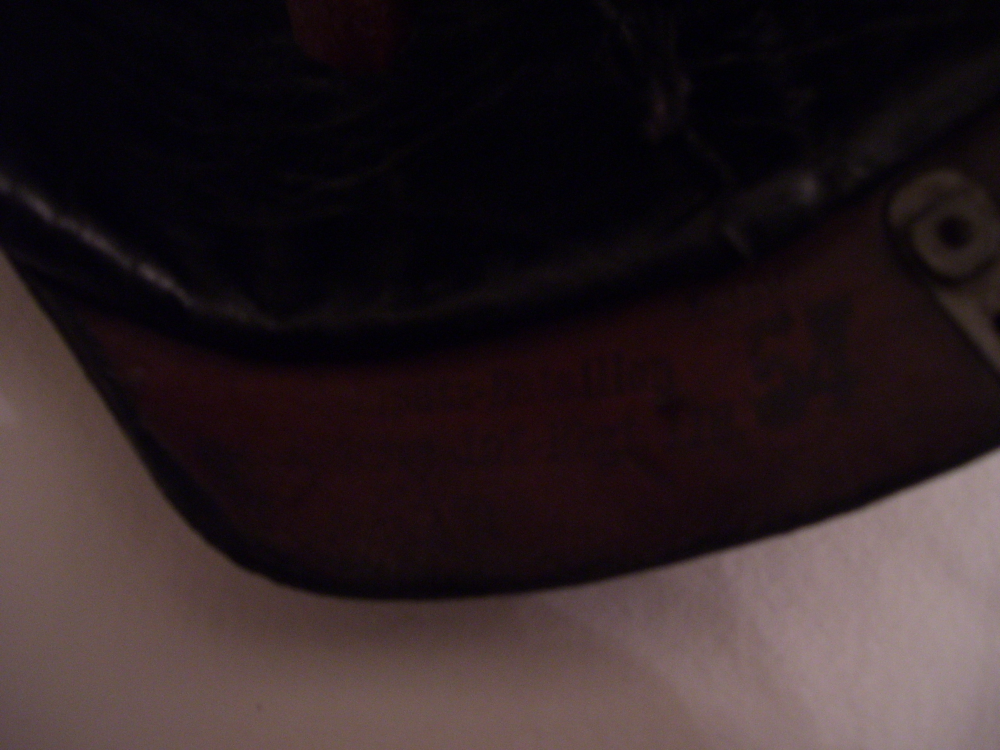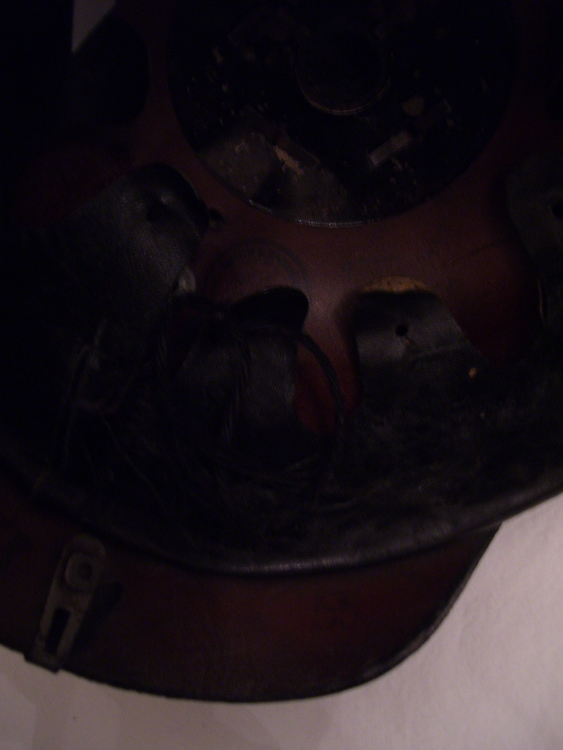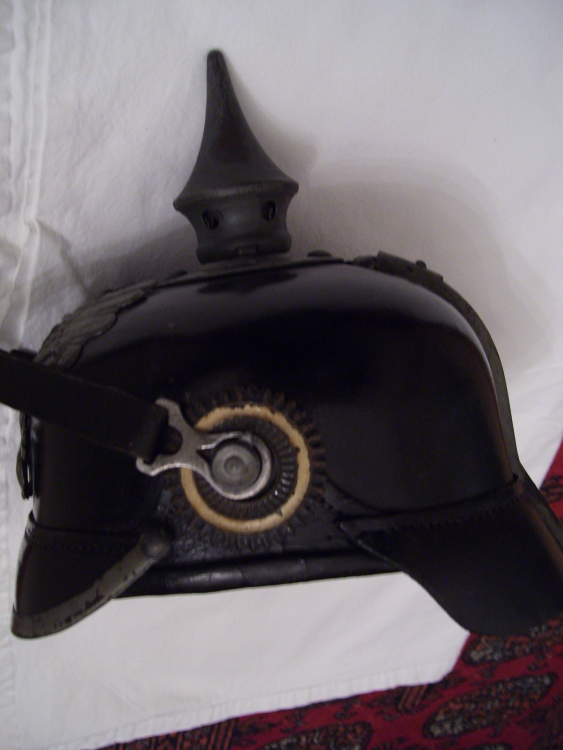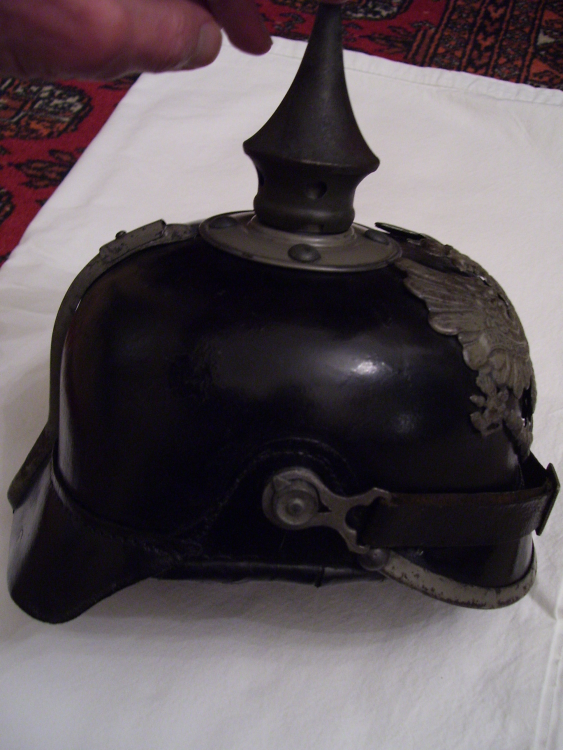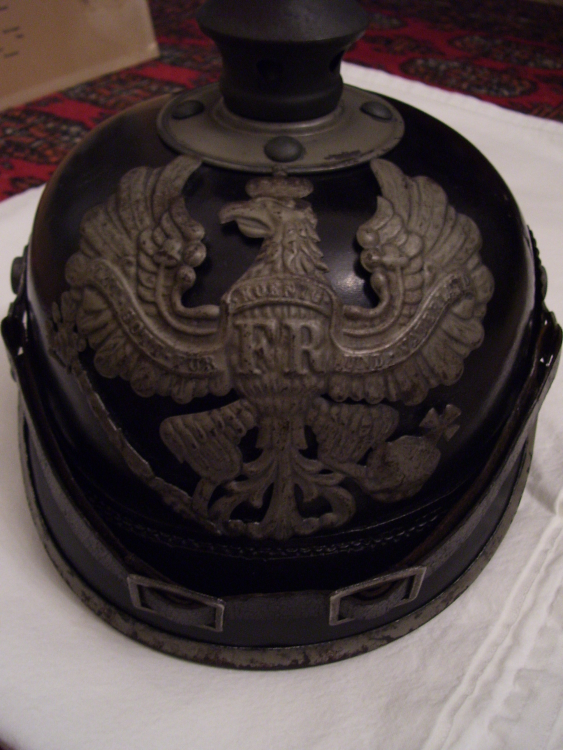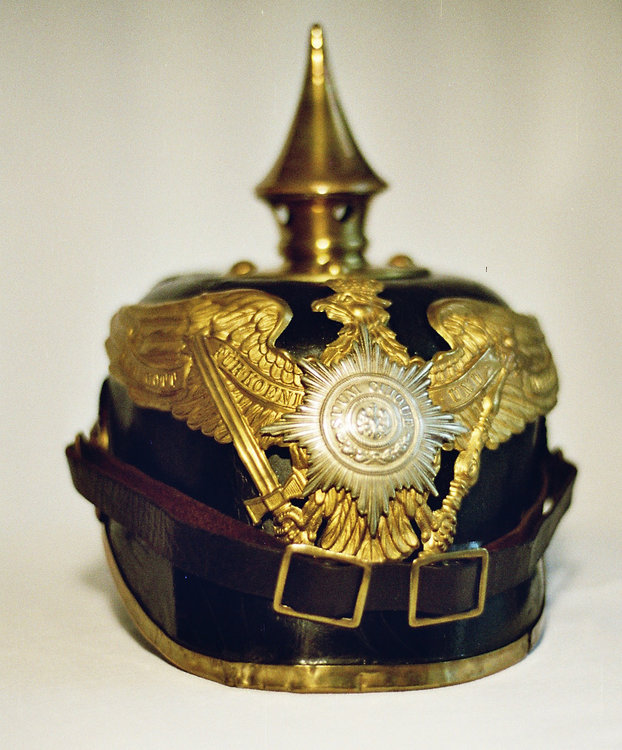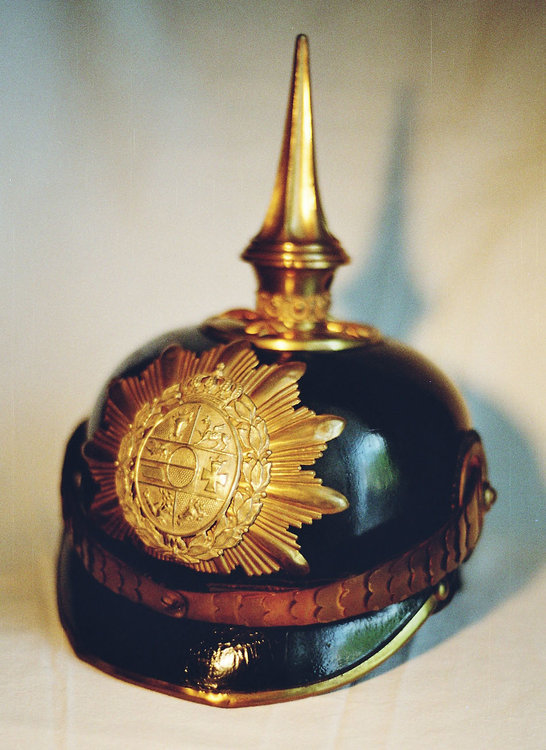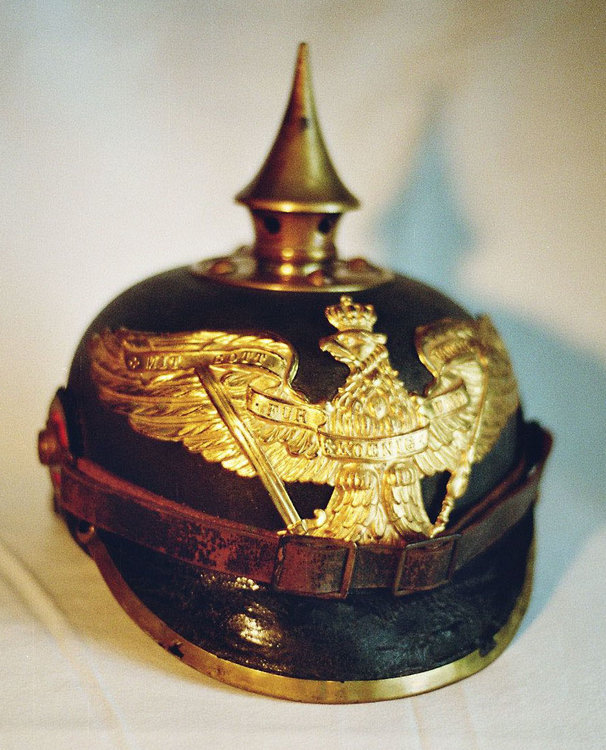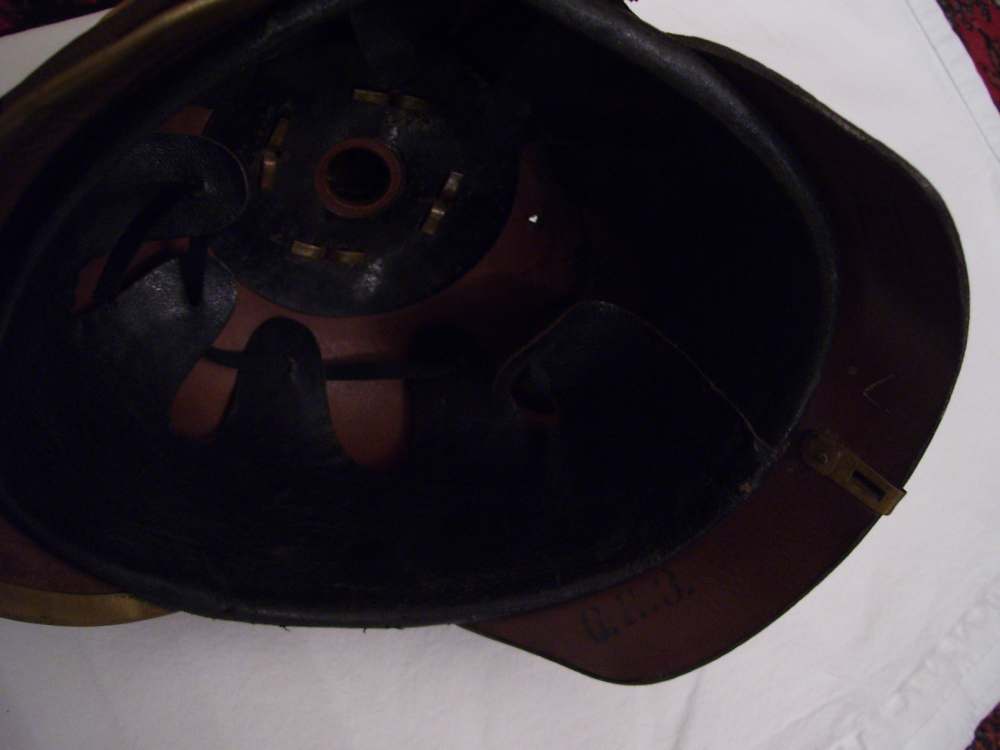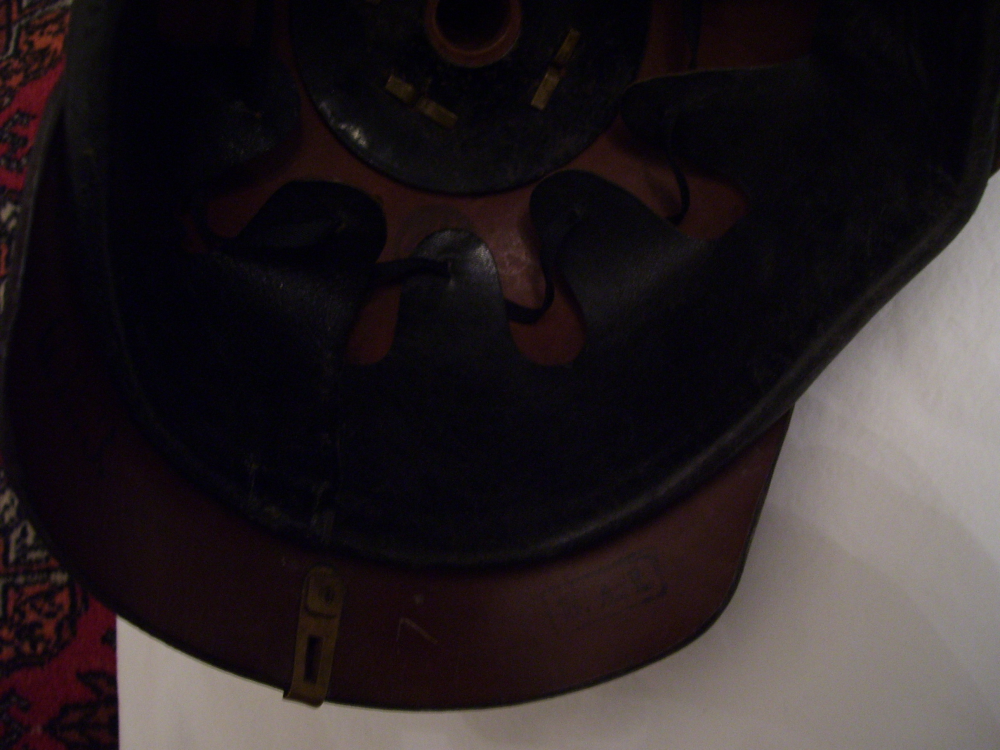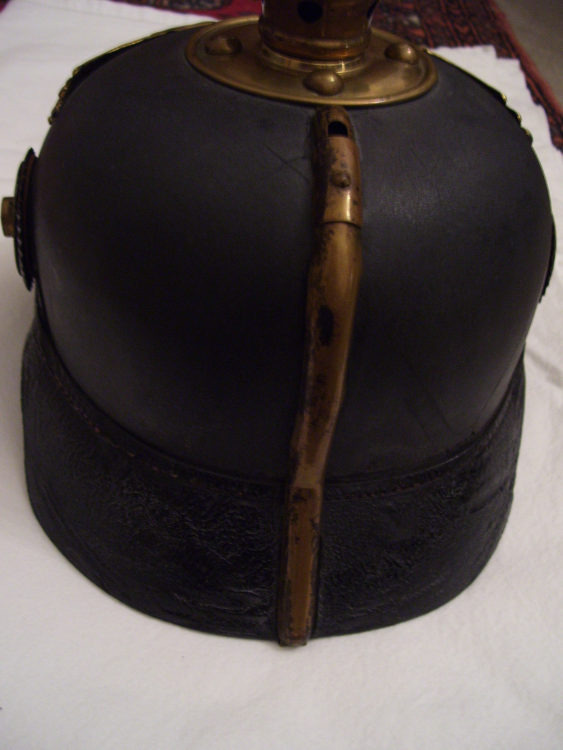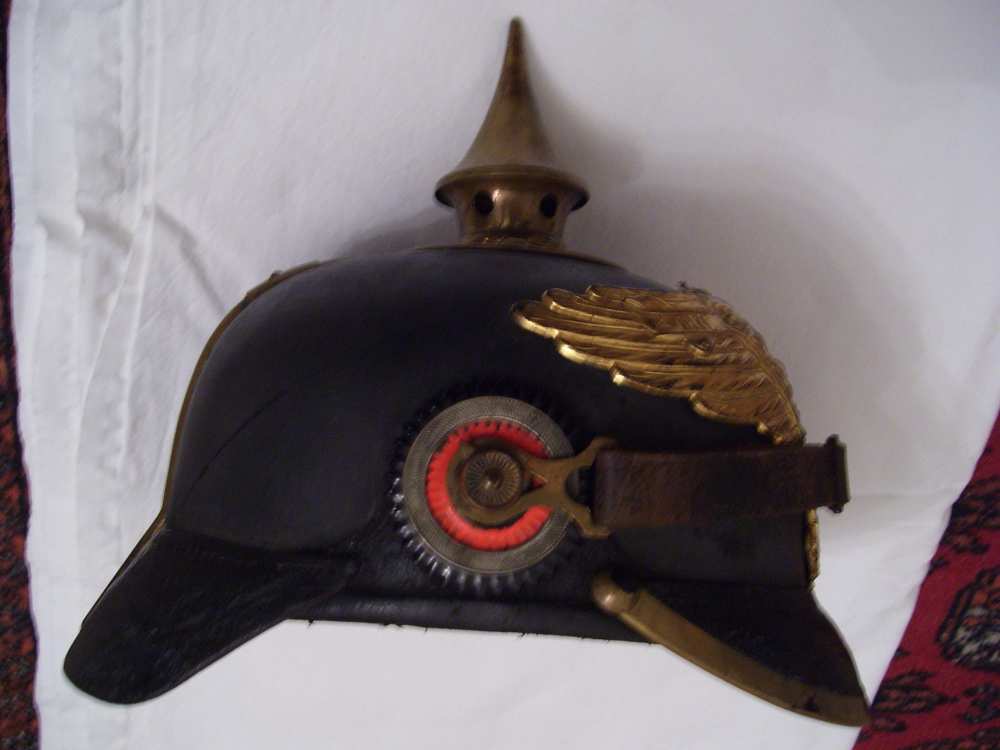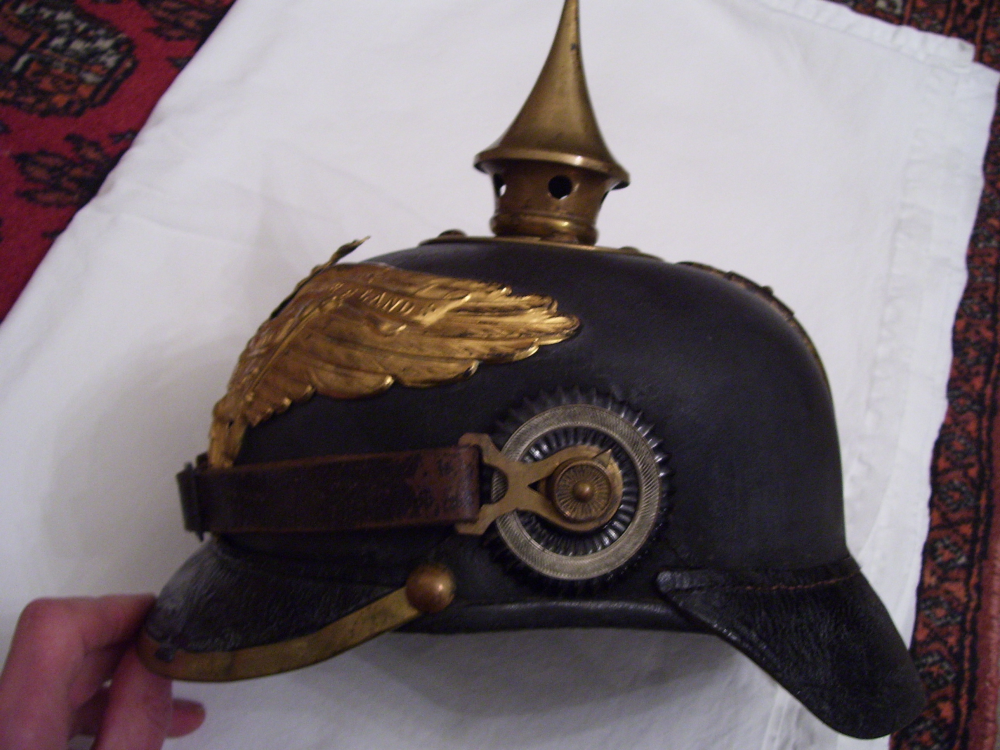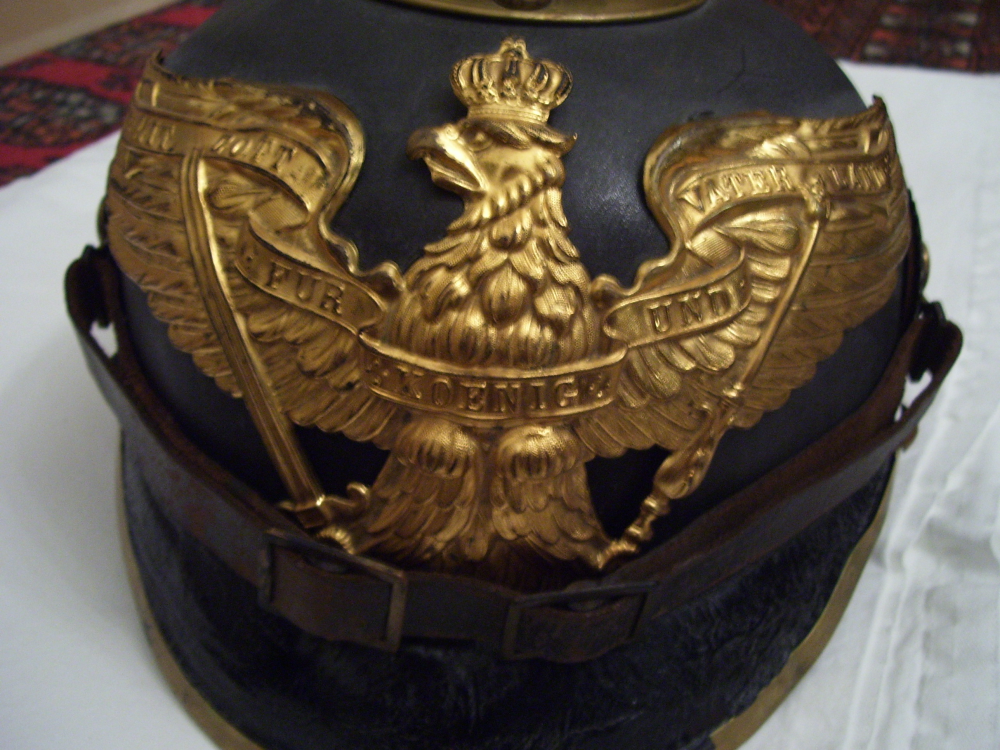Leaderboard
Popular Content
Showing content with the highest reputation on 18/07/19 in all areas
-
3 points
-
I am fast running out of room, so decided to utilise this wooden chest, I have lined it with an exercise Matt & I intend putting risers in the corners so I can cut a piece of board to size so I can have another layer of space * like a chocolate box* haha All the paper work in the pic is from an educational pac i bought regarding ww1. ( nice to dislay)3 points
-
Very nice! Likewise, I do not have very much in the Austrian category, it is extremely rare to find it here in the US. Below is the enameled canteen, you often see in Austrian collections, however this one is mint with the cloth cover. Sadly it doesn't have the cup or carrying strap, but the condition more than makes up for that I feel. I often see these with rust and chips to the enamel.3 points
-
I've seen a few of these on offer, also with the cup and cover. They cost around 200 Euro complete, never seen the carrying strap however, I believe they were carried on a string or cord.2 points
-
Shown is an officers helmet, basic pattern for Grenadier Regiments 1-12, except for G.R. 1,4,7 and 9, which wore helmets with the Grenadier eagle, old or new pattern and with battle honours etc. The old pattern eagle shown is pre 1913. The new pattern eagle was introduced gradually for all regiments between 1897 and 1913. Shown is the old pattern heraldic eagle with an oval FWR shield on the breast. The helmet is presumably from Grenadier-Regiment König Friedrich I. (4. Ostpreussisches) No.5, based in Danzig, as it came complete with cloth cover and red regimental number. The eagle displays a very fine quality fire-gilding. Inside is the normal officers type lining in leather and ribbed silk, the front peak is lined in green leather, the rear peak in red leather, which was standard for officer helmets. This example could be dated as around 1897-1910, probably the latter, as the spike is relatively tall. Correction: Title of Regiment should read: Grenadier-Regt. König Friedrich I. (4.Ostpreussisches) No.5 - based in Danzig. Friedrich I was the first King of Prussia since it's establishment in 1701. This cover came with the helmet, however, this is an other ranks' issue, but may have been worn with such1 point
-
1 point
-
I did a battlefield tour in 2015, very reasonable prices. just have to shop around and plan accordingly. Our package included a driver picking us up at our hotel, then taking us all around the Messines, Ypres area, all the museums, cemeteries, you name it. Below are just some examples of what you can find. I went to a barn (first photo) where a local farmer had several tables set up to where you can purchase whatever you want, only thing to remember is some of this stuff amy still be live. However you are allowed to walk in some of the fields (the guide usually coordinates this beforehand) and pick up the shrapnel balls, spent casing, etc. We saw rows of artillery shells lining the roads by the farms, the guide told us the Belgian Army EOD collects them once a month and destroys them. It is amazing how much ordnance is still there!1 point
-
1 point
-
1 point
-
1 point
-
1 point
-
1 point
-
A Prussian Pickelhaube This helmet was purchased in early 1970 from a London dealer, Chris Farlowe, who ran a militaria shop, Call to Arms in London borough of Islington, opposite Camden Passage at the time. Farlowe was otherwise known as a rock band leader in those days. He often appeared at concerts throughout Germany, at the same time, purchasing stock for his business. The shop closed sometime in the 1980s. I think I paid around 17 pounds for this item.. The helmet is of the older type of Prussian infantry model, but has convex chinscales, which were not regulation for the infantry, so it could well be infantry or possibly other services, most likely for an Unterarzt or veterinary personnel. The helmet came complete with its original cardboard transport or storage case, inside with ornate label of Eduard Sachs, Berlin, military outfitter. The crown of the helmet is unusually high with a seam below the rear spine, the front and back peak are longer than on later models. Emblem and convex chinscales in fine officer pattern quality, the other fittings are of a very good quality other ranks type, the rear spine without ventilation slide as per 1871 model. Cockades as per officer pattern The original silk liner is missing, the light brown leather sweatband in mint condition as with inside of helmet with light brown leather finish. Within the skull is the handwritten wearers name, Kolbs.1 point
-
Helmet from Reserve-Infanterie-Regiment 39 The second pickelhaube I ever bought in an antique shop in London in 1969, at the time in a sorry state and since restored. When purchased, the spike was missing from its base, the Prussian cockade was missing, the chinstrap very worn, one tear, the leather completely dried out, the leather liner also. I later managed to get an original spike, which was thoroughly oxidised and needed a good restoration, and also an good Prussian cockade with all original finish. The peak rim was loose and distorted, as was the rear spine, both moderately put back to shape. The helmet had received a bullet or shrapnel fragment hit to the left of the eagles scepter, breaking this and leaving a small, neat hole through helmet skull and liner. Since restored, the helmet is in reasonable good conditiion with genuine war damage. At the time, I used Meltonian Patent Leather Restorer, which was the best product for helmet care at the time, unfortunately since vanished from the market. This helmet is an older model with a date stamp of 1889 inside the neckguard. The skull is of the older shallow eggshape, typical of the 1880s period. There is another stamp of F.R. 39, being Füsilier-Regiment 39 in Düsseldorf, and a Roman numeral VII, being the 7th army corps. The helmet was later stored, refurbished and reissued to Reserve-Infanterie-Regt. 39, presumably around the time of mobilisation in 1914, indicated by a further stamp of R.I.R.39, and R.VII, being the 7th Reserve Korps. The helmet has been fitted with a renewed front and back peak, as well as chinstrap and side posts M.91, replacing the previous M.87 pattern. This was common practice in the Prussian army, which was infamous for its thriftyness, and nothing was ever thrown away, everything was re-used or adapted for re-use. The full title of the first regiment was Niederrheinisches Füsilier-Regiment No.39 In 1917 the title was changed to Füsilier-Regiment General Ludendorff (Niederrheinisches) No.391 point
-
Württemberg Officer Helmet, 1914/15 A not quite typical example of a Württemberg infantry officers helmet from early war period. This helmet I purchased in London, Portobello Market around 1971 from a collector/dealer, and came from his own collection. This would have been a private purchase nco or maybe oneyear volunteer type, and is of officer quality throughout. It would originally have been with other ranks cockades and a patent leather chinstrap with finely gilded fittings. The Chinscales are a wartime addition, being of Ersatz material, the scales are gilded iron with a black waxcloth backing, the gilding of a typical wartime quality, with slight edge wear. The cockades are of officer pattern, the black/red state cockade as per Württemberg pattern, with a distinct moulding, differeing from the Prussian pattern, the Reichskokarde in the usual fashion. The spike is tall but lacks the typical officer Perlring around the base, but does have the stars around the spike base. The finely gilded Württemberg emblem lacks the staghorn, which has broken off at some time. All other fittings and fine siilk liner are of peacetime officer quality. The wearer would have been promoted to officer rank during the early wartmie period. The helmet is not conform to the official peacetime regulation for a Württemberg officer helmet, which had a square front peak, and which spike was mounted on a crossbase. The alterations would have been carried out in the field (mitbefördert). The helmet is in very good fresh conditon, unchanged and unaged since its purchase in the early 1970s. The condition of many helmets found nowadays has deteriorated since then.1 point
-
Prussian Guard Officer Helmet A classical example of an officers helmet of the Prussian Guard Infantry regiments. An almost luxurious quality, with finely gilded fittings. Makers name impressed into the leather sweatband as Robrecht & Co., Berlin which was a well-known officers military outfitter at the time, from around. 1912-14, with a fairly tall spike. This pattern of helmet was worn by the following Guards regiments: 2, 3. & 4. Garde-Regiment-zu-Fuss and Garde-Grenadier-Regimenter 1,2,3,4 & 5, all stationed in Berlin. The 1st and 2nd batallions wore white parade plumes, the 3rd Bataillons wore black plumes. This helmet was also worn by the officers of the Haupt-Kadetten-Anstalt in Berlin-Lichterfelde.1 point
-
Helmet, Regiment der Gardes du Corps An 1889 other ranks model helmet of the Regiment der Gardes du Corps with Parade Eagle. The helmet shell is a good cleaned condition, the liner has been replaced at some time. Chinscales with some patina on rosettes and steel screw mounts, as worn before introduction of 1894 pattern. Original Reichs cockade, the Prussian cockade is a replacement. Emblem is the socalled guard star or Gardestern in white metal with a copper medallion centre, mounted with a blackened iron heraldic eagle attached at the rear with a leather strip. Around the medallion is a scroll with the motto SUUM CUIQUE above a laurel wreath. The parade eagle is mounted on a white metal eliptical base, the eagle itself is of silvered zink, probably from the 1915 Juncker series. The helmet has no maker markings, only a size stamp 59 to the rear underside rim. This example came from the auctionier Hermann Historica, Munich in 1982. This pattern of helmet was also worn by the Garde-Kürassier-Regiment. The second illustration shows an other ranks' Ringkragen or Gorgette, introduced for the entire regiment in January 1912, the 200th anniversary of the birthday of Frederick the Great. When worn on the Kürass, the centreplate was screwed to the neck area of the Kürass. The Regiment Gardes du Corps was based in Potsdam and was considered the bodyguard of the King of Prussia, who was also its commander in chief, and was the most senior cavalry regiment in Prussia. As a cavalry regiment it had 5 squadrons, which were uniquely divided into half squadrons, known as Companies, in all 10 companies. The 1st Half Squadron bore the title Leibkompanie and had special duties in and around the royal palaces in the presence of the sovereign, mounted and dismounted and escort duties. For this purpose it had special uniforms for ceremonial duties, including a Supraweste, a special bandelier and cartouche and a sabretasche of special pattern. Officers wore a bright red tunic for special occasions, known as a Hof Gala Anzug. A street in the West Berlin suburb of Charlottenburg is still named after the regiment, which held one and a half squadrons in that area, and is known as the Gardes-du-Corps-Strasse. The regiment was raised on 23rd June 1740. The last peacetime commander of the regiment was Major Graf von der Schulenburg. At the outbreak of war in August 1914 the Gardes du Corps was the first regiment to leave for the front. The Kaiser and the Empress Auguste Viktoria accompanied the regiment to the Bahnhof Wildpark station on their departure. The regiment was despatched to the West and crossed the Belgian frontier, advancing to the Marne. After the order to retreat in September 1914, it was moved to the Aisne, where it saw action dismounted in the trenches. From December 1914 till Juli 1915 the regiment was involved in police and administrative duties on the franco-belgian border, after which it was transferred to the Eastern Front, remaining in the Ukraine till November 1918. The rest of the regiment finally returned to Potsdam in 1919, where it was disbanded. The tradition of the regiment was carried on by the 1st Squadron of Reiter-Regiment 4 in Potsdam. Prinz Friedrich von Hohenzollern-Sigmaringen before the parade. Painting by Conrad Freyberg. 4 different types of uniforms worn by the Gardes du Corps can be seen.1 point
-
Helmet for other ranks in Infanterie-Regiment Herzog Friedrich Wilhelm von Braunschweig (Ostfriesisches) No.78, based in Osnabrück and III.Btl. in Aurich. (X.Army Corps) with Waterloo scroll over the line eagle. All of the Hannoverian infantry regiments wore the Waterloo battle honour: I.R.74, 77, 78, 79. 164 and 165. Füsilier-Rgt.73 wore a scroll with Peninsula-Waterloo. These battle honours wree introduced by order of Kaiser Wilhelm II in 1899. The Hannoverian X. Army Corps had been raised in 1866/67, after the annexation of the Kingdom of Hannover and the dissolution of the Hannoverian Army, which had been a cause of grievance to the population of that former state for many years. The helmet is a normal issue version and has a manufacturers date stamp of 1910. The rear peak is inwardly stamped J.R.78 II. The entire helmet is in good original condition, apart from a repair to the Orb at the foot of the eagle.1 point
-
Kürassier-Regiment "Königin" (Pommersches) Nr. 2, Pasewalk, II. A.K. This is an other ranks helmet of the last of the series of helmets made by C.E.Juncker of Berlin, before grey metal fitted helmets went into production in 1915. This example has been cleaned, de-rusted and partly restored by a previous collector. The shell shows almost overall fine pitting, the inside has been repainted, the original liner is missing, the leather linerband has been provisionally replaced. The chinscales have been completely remounted on browned leather. The crown studs I had to replace at my own cost, and these were specially cast from an original. The large cockades show some paintwork damage, especially to the Reichskokarde, which has been slightly retouched. The line eagle with the battle honour has some thinness and hairline cracks, as apparently also acid bath cleaned. The line eagle is of the slightly larger version for Kürassiers and has the battle honour on a scroll across the front - Hohenfriedberg, d. 4.Juni 1745, which is in honour of the battle of that name, fought by Frederick the Great against the Austrians and Saxons, etc. The helmet is stamped within the crown C.E.Juncker 1915 From an auction in Munich in 2004. The regiment dates back to 1717, originally known as Dragoner-Regiment Kronprinz. In the early nineteen century it was converted into a Kürassier Regiment. The last commander in chief was the Empress Auguste Viktoria. All of the later crown princes served as young officers in this regiment, including Kronprinz Wilhelm, Kaiser Friedrich III, and even Wilhelm II. wore this uniform. The shoulder straps of the regiment bore the regimental device of a crowned L for the first female comander of the regiment, Queen Luise of Prussia, who was honorary commander till her death in 1810. The unform of the regiment was the white Koller with karmesin coloured facings and trim, white metal buttons. In 1897 a gorgette or Ringkragen was introduced for all ranks of the regiment, and this in three versions, one for other ranks, one for the Unteroffiziere, and a special version for the officers. Depicted is the other ranks version. The regiment stood in Pasewalk and belonged to the II. Armee Korps. Helmet by C.E.Juncker, 1915. Has been cleaned, de-rusted, inside repainted, missing liner with a replacement leather ring. Peaked cap for other ranks, Gefreiten, Unteroffizier and Sergeant for walking out dress. Manufactured after 1915. White uniform cloth with karmesin (crimson) coloured facings. Illegible maker's mark from the city of Pasewalk, which was also the garrison of the regiment. Normal peacetime constellation, peak inner and liner are in greygreen, a definite indication that the cap was produced after September 1915. Peak is outwardly black, although the regulations stated that the peak was to be matt greygreen, this regulation was seldom followed, as seen on surviving examples. The quality of the material is not comparable with peacetime examples, the capband is of relatively poor quality material in comparison, piping is of good quality, the basic off-white material is also of slightly poorer quality. Inner head band is of grey waxcloth, with a ribbon bow to the rear, again, wartime quality. The colours of the crown piping have run slightly, probably due to rain, and the lesser quality of wartime dyes. Has probably been worn post-WW1 for traditional reunions. The original Reichskokarde was missing, due to the revolution of November 1918 and the ensuing new laws, here, an original replacement of lesser wartime quality, the white has turned yellowish due to the inferior quality of the colours. Kronprinz Wilhelm in the uniform of the Regiment, ca. 19071 point
-
Infanterie-Regiment 93, Anhalt This is an other ranks helmet for Anhaltinisches Infanterie-Regiment No.93, I. and III. Battalions based in Dessau, II. Btl. In Zerbst, and belonged to the IV Armee Korps. The tradition of the regiment goes back to 1807, its date of founding.. Anhalt was one of the smaller states in the German Empire. Its official ruler was since 1907, Friedrich II. Duke of Anhalt, who was deposed, as with all other heads of state, during the November revolution 1918. The example depicted is in very good condition, and is a standard issue model wthout any regimental markings, the chinsctrap is of the private purchase type, patent leather with fine gilded fittings. On the left side is the cockade of Anhalt in all green, right is the Reichskokarde. No parade plume was worn. The Prussian line eagle with Fürst Bandeau bears the silver crowned arms of the Duchy of Anhalt, a crowned shield, divided, left, a half an eagle, right, a half of a Saxon shield, standard leather liner.1 point
-
Prussian Field Artillery Officer This is a standard example of a helmet of a Prussian Officer of the Field Artillery Regiments of the Line. All gilded fittings and convex chinscales. The line eagle has most gilding and some slight wear. Light brown leather sweatband with a silk ribbed liner showing some wear and age fraying. Some restoration to minor lacquer damage. Purchased at a London arms fair in 1972 for forty pounds. A black horsehair plume was worn by Regiments 5, 7 (mounted battery), 5th and 6th Batt.of Rgt.42, 74 and 26 - Regt, 26, 2nd Batt. wore a bandeau with battle honour: Colberg 1807. Prussian field artillery regiments consisted of 6 batteries, each with six guns. The batteries were horsedrawn and were mainly armed with the Feldkanone C.96 with a calibre of 77 mm.1 point
-
Garde-Kürassier Helmet, M.1867 Helmet for other ranks of the Garde-Kürassier-Regiment in Berlin. Based in Berlin-Tempelhof. The regiment was raised in 1815, and together with the Regt. Gardes du Corps formed the 1.Garde Kavallerie-.Brigade. This is orginally an old pre 1860 model, which has been adapted to the later M.1867. The height has been reduced and the peaks reset by the regimental workshop. Helmet body is of Tombak with white metal trim all round, long neckguard stamped on outer edge G.K.R. with old style channeled front peak Massive tombak chinscales on officers cloverleaf rosettes mounted with correct iron screws. Leather liner is missing, a makeshift leather liner band holds the screws with the right pressure. White metal spike base with tombak coloured spike, higher than later models. The emblem is the Guard Star in large format, this is the older version, originally without the motto scroll, which was then applied after 1861 Mit Gott Für König und Vaterland, this in four sections around the stars rays, in one place repaired. The centre medallion is copper coloured with a black lacquered Prussian eagle. The uniform was the white uniform of the Kürassier-Regiments, here with dark blue facings and whtie Garde-Litzen, silver buttons, white breeches, Brandenbourg boots, whitened leather equipment with bandelier and Kartusch, latter with yellow metal Gardestern. Cuirasse of steel with Tombak coloured centre, white metal rivets, worn till 1888, thereafter ceremonial. Fatique cap, white with dark blue band and crown piping. Weapon was the Kürassier Pallasch. A dark blue tunic was also issued for less formal duties and known as a Waffenrock, with the same badges as the white tunic or Koller. The helmet was restored by a jeweller about 30 years ago, as it had many dents and much patina. A nice old helmet with a lot of history and character. Both orignial cockades, the Reichscockade was added in 1897, which shows how long old helmets were to be worn. In fact, metal helmets were supposed to have a wear period of at least 70 years! Some old photographs show helmets of this kind being worn right up till after the turn of the century, but mostly by Reserve Squadrons. This type of helmet was also worn by the Regiment Gardes du Corps in Potsdam. Both regiments wore a silver standing eagle in place of the spike for important occasions. This piece was discovered in an auction in Munich in 1987. Reprint of a poster of the uniforms of the Regiment der Gardes du Corps through the ages, dating from about 1864. An unusual photo, as the Kürass and the eagle were never normally worn with the dark blue Waffenrock, which was a secondary dress. Early photo.1 point
-
Prussia Kürassier helmet, M.1867 An other ranks helmet M.1862/67 for Prussian Kürassier Regiments. There were eight regiments of the line. This helmet was for all regiments other than Kürassier-Regiment 2 and Kürassier-Regiment 6, whose helmets were of Tombak with white metal fittings. Kürassier Regiment No.1 wore the line eagle until 1902 when a new special pattern of eagle for this regiment was introduced by Kaiser Wilhelm II., by which time, the regiment had the more modern pattern of helmet from 1889. Kürassier Regiment No. 2 had a different emblem. The helmet shown has a very high crown, possibly reduced in height by 1867. The body is of steel with a long neckpiece and a channeled front peak, brass trim all round, the base of the spike and all other fittings and the line eagle are of brass, the tip of the spike is steel. The middle part is movable to enable the wearer to adjust the venitilation holes. The helmet has an original leather and felt liner, the neckguard is covered with black tarred leather, the inner front peak painted green. The massive convex brass chinscales are mounted on brass rosettes and iron screws (eiserne Schlitzschrauben). The helmet has no markings or manufacturers mark. The helmet has been nicely cleaned by a previous owner, and is in good condition for age. It could well have served in the wars of 1864, 1866 or 1870/71. The helmet was worn with a steel breast and backplate over a white Kürassier uniform and Brandenburg boots. The armament was a long broadsword with a brass basket hilt with four bars, the hilt leather, bound with brass wire, and was known as a Kürassier Pallasch, total length was in the region of 110-120 cm. Some of these weapons were of French origin, as captured in the Napoleonic wars and the war of 1870. The breast- and backplate for active service was officially abolished in 1888, thereafter parades only, and of lighter metal. There were basicaly two models of Kürassier Pallasch, the French and the Russian type. The eight Kürassier Regiments (home station in brackets) were: Leibkürassier-Regiment Grosser Kurfürst No. 1 (Breslau) Kürassier-Regiment Königin No. 2 (Pasewalk) Kürassier-Regiment Graf Wrangel No. 3 (Königsberg) Kürassier-Regiment von Driesen No. 4 (Münster) Kürassier-Regiment Friedrich-Eugen von Württemberg No. 5 (Deutsch-Eylau, etc.) Kürassier-Regiment Kaiser Nikolaus I. von Russland No. 6 (Brandenburg) Kürassier-Regiment von Seydlitz No. 7 (Magdeburg) Kürassier-Regiment Graf Gessler No. 8 (Deutz) N.B.: The last Colonel-in-Chief of Kürassier-Regt. 8 was King George V of England. The regiment wore his crowned monogram on the shoulder strap 2. Otto von Bismarck, the Iron Chancellor, was often depicted in the helmet and uniform of Kürassier-Regiment 7 - (uniform with yellow facings). He was a Major of the Reserve in this regiment. Reichskanzler Otto von Bismarck in the Uniform of Kürassier-Regiment 7. He was a Major of the Reserve.1 point
-
A helmet of Füsilier-Regiment Königin Viktoria von Schweden (Pommersches) No.34, based in Stettin. This pattern of helmet was also worn by the 5th and 6th Companies of Füsilier-Regiment 33. The helmet is the standard Prussian type, the line eagle has a large scroll along the front, bearing the inscription in black lettering: Für Auszeichnung d. vormals Königl.Schwedischen Leib-Regiment Königin, this referring to the tradition and origin of the regiment before 1815, when the northern part of Pommern belonged to the Kingdom of Sweden, and this was handed over to Prussia during the Vienna Congress in 1815. The example shown is in very good conditon and datestamped 1912. There is only a faint illegible stamp in the neckguard. The regiment wore white shoulder straps with the red crowned monogram of Queen Viktoria of Sweden, and belonged to the II. Army Corps in Stettin. No horsehair plume was worn.1 point
-
A helmet of Bavarian 6th Chevaulegers-Regiment Prinz Albrecht von Preussen, garrison: Bayreuth. This helmet has all the aspects of a classical Bavarian helmet. The style is reminiscent of the Prussian Dragoons. The helmet has a higher crown, a square peak, a fluted spike on a crossbase with perlring, a large Bavarian emblem and chinscales on sideposts M.94. The cockades are the Reichs on the right side, the Bavarian on the left. All fittings are in white metal, as for all the regiments with even numbers, in all, Bavaria possessed 8 Chevaulegers Regiments. Bavaria had no dragoon regiments. The word Chevaulegers is from the French, meaning light horse. Inside the crown are two issue dates, 1904 and 1906. The neckguard is stamped: 6.Ch.R.. The regiment was based in Bayreuth and belonged to the III. Bavarian Army Corps. A helmet of this type was also worn by The Infanterie-Leib-Regiment until 1896. The spike has been restored by a jeweller many years ago.1 point
-
Helmet M.1896 for Bavarian infantry regiiments. Bavaria held in all, 24 infantry regiments in peacetime, The Leib-Infanterie-Regiment and 23 line regiments. All 23 regiments wore the standard helmet as shown. The helmet for the Leib-Regiiment had all white metal fittings and white metal chinscales. The example shown is in almost mint condition with only very light wear. Both original cockades and chinstrap. The Bavarian cockade is of matt silvered iron with a blue ring. The finely gilded emblem is the Bavarian greater coat of arms, flanked by two crowned lions. None of the Bavarian infantry regiments wore a horsehair plume, not even the Leib-Regiment, apart from the regimental commander and Offiziere à la Suite. The helmet shown has a datestamp of 1912 and the neckguard has a stamp of 21.J.R., i.e., Königlich Bayerisches 21. Infanterie-Regiment Grossherzog Friedrich Franz von Mecklenburg The Grand Duke of Mecklenburg was honorary chief of this regiment. Bavaria had its own separate army and war ministry until 1916. Its regiments had a separate numbering to those of the Prussian and contingent armies. It also had uniform styles and regulations, which greatly differed from those of the Prussian Army. The Bavarian Army had three Army Corps in peacetime, I,. II. and III. A.K. The 1896 pattern helmet, similar to the Prussian, replaced the old Bavarian helmet of 1886, which had a fluted spike on a crossbase and a square peak, rather like a dragoon helmet.1 point
-
Helmet ca. 1914/15 for Infantry of the Saxon Duchies (Thüringen). This pattern emblem and cockade, green with a white ring, was worn by troops from following states: Sachsen-Altenburg, Sachsen-Coburg-Gotha, Sachsen-Meiningen. i.e., following regiments: 6. Thüringisches Infanterie-Regiment No.95 (Gotha, Hildburghausen and Meiningen) and 8. Thüringisches Infanterie-Regiment. 153 (Altenburg) The helmet bears the Prussian Line Eagle with Fürst motto, with a white metal star and crowned Saxon emblem. This example is not regimentaly marked, but has a date stamp of 1915 and a hardly legible makers mark from Zeitz, which is in this region. This example is in mint condition, seems hardly worn.1 point
-
Helmet for other ranks of Royal Saxon Grenadier-Regiment Kaiser Wilhelm No. 101, based in Dresden. This example in good condition, only the tip of the spike is damaged. The helmet is a regular issue but without any regimental markings. The spike is removable, as this regiment wore black parade plumes, as did also Regiment 100. Original cockades of Saxon pattern (white with green ring), on replaced original flat chinscales M.91 The emblem is a gilded starburst with a white metal crowned Saxon emblem within a laurel wreath. Saxony held 15 infantry regiments in the peacetime period.1 point
-
Helmet for an officer of the Reserve of one of the Saxon Field Artillery Regiments. This helmet is of very light, thin construction, made about 1912-14 in the most elegant form. Due to the lightness of construction, the helmet body has suffered some damage and is slightly misshapen, but has been restored. The gilded fittings are in excellent condition with most original frosting to centre of emblem. The Saxon emblem has an underlying silver Reserve Cross over the gilded star. The Saxon Reserve Cross had no motto. The cockades are finely silvered and enameled. The chinscales are highly convex and of very thin gilded metal. Silk and leather liner is in good order, with only slight wear. The thin peaks are lined with a thin cotton material, green to the front, red to the rear. Purchased in London in the early 1980s. Saxony had following Field Artillery Regiments in peacetime: R.12, 28, 32, 48, 64, 68, 77 & 781 point
-
Helmet dated 1915 with stamp Fs.A.R.4 for Magdeburgisches Fuss-Artillerie-Regiment No.4, based in Magdeburg, and part of the IV. Army Corps. There is also a makers mark of: Heinrich Timm in Magdeburg. Almost mint conditon, apart from storage dirt and age, inside looks as though hardly worn. The chinstrap and cockades have been replaced, in this case a patent leather private purchase type chinstrap with gilded fittings, not quite fitting for an issue helmet, the Reichs cockade is an orginal, the Prussian is a repainted collectors copy. This item came to the West shortly after the fall of the iron curtain. The foot artillery regiments other ranks wore a leather chinstrap instead of the chinscales, parade plumes were not worn. Officers wore flat chinscales.1 point
-
Helmet for Garde Infanterie M.1895 with black horsehair parade plume. The guards regiments wore horsehair plumes for parades and special occasions. The first and second battalions of each regiment wore white plumes, the third (Füsilier-) Batallions wore black plumes. For all companies of Garde-Füsilier-Rgt,. black plumes were worn. This example is from the third or Füsilier-Batallion (III.) of the Kaiser Alexander Garde-Grenadier-Regiment No.1, which was based in Berlin, Alexanderplatz, just behind the Berlin City Palace (Berliner Stadtschloss). The Czar of Russia had always been honorary commander of this regiment, which wore the monogram of Czar Alexander I. on their shoulder straps. The pickelhaube was only a secondary headdress of this regiment since 1894, when mitre-caps were introduced for parades. These were the original mitre caps of the First Foot Guards, which Czar Alexander had made a present to this Regiment in 1814. The First Foot Guards (Potsdam) then received a new pattern of mitrecap by order of Kaiser Wilhelm II in 1894. This helmet has a regimental stamp inside the neckguard: K.A.R.1 point
-
Helmet of a Prussian Officer of the Landwehr Infantry. The line eagle has no scroll, on the breast is the Landwehr Cross with the usual motto. The spike is of medium height, dating the helmet beween 1897 and before 1910. Both cockades. The silk liner has an ink marked R.VIII being the 8th Reserve Korps in the Coblenz region (Rhein). Helmet is is very good condition with some slight shrinkage to upper crown.1 point
-
Shown is a helmet for Prussian Dragoner regiments with white metal fittings. The chinscales are, as always, of yellow metal, with white rosettes mounted with iron screws of the old pattern before 1894. Only the Prussian cockade was worn. The plate is the white metal dragoon pattern eagle, the spike with perlring on a crossbase, is removable, as all dragoon regiments wore a black horsehair plume for special occasions. The crown is slightly higher than on later models, and the helmet is of thick lacquered leather. Helmet fitings have some staining and verdigris from long storage. A printed linnen label in the crown bears the details of the last wearer: Einjährig-Freiwilliger Woge, 5. Eskadron that is of a one-year-volunteer of the 5th squadron, unfortunately without mention of the regiment.1 point
-
This helmet is for a Reserve Officer of the Prussian Dragoner Regiments with yellow metal fittings, as worn before 1897, and only has the Prussian cockade on the right side. The golden dragoon pattern eagle has a gilded Reserve Cross on the breast and no scroll across the wings. The cross bears the motto: Mit Gott für König und Vaterland 1813, which was the date in which Reserve and Landwehr were first raised. The gilding on most of the fittings shows some wear and darkening, the gilt on the emblem is almost 100% This pattern of helmet was also worn by all Officers of the Provinzial Landwehr-Kavallerie units. The fact that the cross is gilt would make it theoreticly "Landsturm" - Landsturm Kavallerie.1 point
-
This is a standard helmet of the Prussian field artillery regiments. There is a date stamp in the crown of 1915, and the fittings have not been gilded. The helmet has the normal line eagle, the balltop has a perlring around the base, the chinscales are of the convex type always worn by mounted troops. In very good condition, as probably only worn for a short period before the introductiion of the steel helmet. The helmet has no further markings, apart from an erased stamp in the neckguard.1 point
-
This old model 1867/71 helmet was worn by 1st Foot Guards, Garde-Füsilier-Regt. and by the Garde-Pionier-Bataillon until more modern helmets were introduced in 1887. The Reichs cockade was not introduced until 1897 and only the Prussian cockade was worn under the right chinscale. The crown of the older helmets was higher, the peaks longer. The spike had a perlring around the base, the back spine had no ventilation slider. The flat yellow metal chinscales were worn with white metal rosettes fastened by iron screws (eiserne Schlitzschrauben) The guard eagle and other fittings are of white metal (Neusilber), the star was of white metal Argentan, a different form of alloy. As from the 12th November 1888 helmets of the First Foot Guards (1. Garde Regiment zu Fuss) were fitted with white metal chinscales. The helmet depicted has no internal markings and has been worn over a longer period. The Garde-Füsilier-Regt. was based in Berlin, the First Foot Guards in Potsdam and the Garde-Pionier-Btl. was in Spandau1 point
-
Helmet for Baden Infantry Regiments in Ersatz material, known as a Filzhelm. Made during a period when leather stocks were in short demand. Body is made in one piece in greygreen felt, lightweight black leather liner. No markings to inside of helmet. The plate, side lugs, peak rim and spike are of peacetime quality yellow metal. This example was not fitted with a back spine.. The plate is the Baden Griffin with Fürst motto, the Reichs cockade and chinstrap both original replacements, the Baden cockade is a simple cast copy with the correct colours. The helmet was manufactured in 1914 - 1915 or possibly longer, and was intended for non-frontline units. Baden was a Grand Duchy, ruled by Friedrich II (Grossherzog) and the Baden contingent was the XIV. Army Corps centred in Karlsruhe. Baden held following infantry regiments: 109-114, 142, 169 and 170, apart from the Reserve Regiments raised after mobilisation. Helmets of this construction were rather flimsy, and not many have survived to this day. Purchased in Londons Portobello Road in 19781 point
-
Depicted is a Prussian infantry helmet from around 1915. The fittings are mainly of peacetime yellow metal variety. The side posts are greymetal finished iron. The chinstrap has brass fittings, spike and line eagle are of yellow metal. Many examples had these fittings with a toned bronze finish to make the helmet less conspicuous. Helmets of this type were only worn for a brief period, and were basicly experimental, and mainly because of shortage of materials, leather stocks were becoming scarcer as the war progressed and could not be easily replaced. This type of helmet was not intended for front line duties and was not worn with a cover. This applied also to the other variations in felt and other Ersatz materials. The helmet is of pressed steel and has about 95% of original fieldgrey finish, the liner is of standard leather on a reiinforced textile ring with internal fastening. The helmet itself shows no makers marks, just a handpainted white 27 inside the neckguard, presumably for Infantry Regt.27, which was based near Magdeburg (IV. Army Corps) Very good condition for age.1 point
-
Shown is an older example of a Hessian helmet for Grossherzoglich Hessisches Infanterie-Regiment Kaiser Wilhelm II, No.116, based in Giessen/Hessen. Kaiser Wilhelm II. chose to be the regimental colonel in chief of this Hessian Regiment. The uniform looked quite distinguished with dark blue tunics, white metal buttons, red collars and facings, the shoulder straps and cuff patch were white, the former with the red monogram of Wilhelm with the Imperial Crown (one of the few regiments to wear this type of crown). The helmet could be fitted with a black horsehair plume for parades. The Grand Duchy of Hessen-Darmstadt contributed following infantry regiments: 115, 116, 117, 118 and 168, and formed part of the XVIII. Army Corps. The last head of state was Grand Duke Ernst Ludwig of Hessen-Darmstadt. This older example has been refurbished with side buttons M.91 and a brown leather wartime chistrap with bronzed iron fittings. The other fittings are of an older pattern, the plate is fitted with screw posts, both correct original cockades in orginal colours. The spike is removable to fit the horsehair plume. The spike itself is of the unique Hessian pattern, six sided and on a cross base. The front peak is rounded and not square. The back spine is not quite as per regulation, as in the Hessian regulatiions the back spine was to be fitted with two outward studs. The rear peak has a hardly legible stamp of R.1161 point
-
Shown is a fieldgrey fitted pickelhaube for Hessian troops. The helmet is of a very small size, 53/54. All fittings have the original greymetal finish. The chinstrap is of original brown leather and very worn. The Reichs cockade is original, the Hessian cockade is a very good collectors replacement, which I got at a Berlin Arms Fair about 14 years ago, this being of the correct pattern, entirely different from the usual cockades. This was blank, so I lacquered this in the correct colours, white with two red rings. The normal pattern spike shown is not the correct pattern, but has been with the helmet for many years. The correct pattern should be hexagonal, or six sided. As these spikes were removed, they often got lost! In fact I remember reading the memoirs of a German infantryman in WW1 many years ago. Before the assault, everyone had to remove the spike from the helmet and these were put in a large potato sack, which later got lost! That was not so good for behind the lines parades, and something makeshift had to be done. So therefore each man cut a raw potato to shape and placed it under the helmet cover. The higher ranking dignitary taking off the parade did not notice the swindle and all were content! The helmet shown has a makers stamp inside, Nordwestdeutsche Lederwaren, Offenbach a./M., similar to another example shown. There are no regimental markings to the helmet, the rear peak has been blackened over inside, presumably not to give away information on the unit. Numbered shoulder straps were also often removed before frontline action. The helmet is in all, in very good condition, but leaves the impression that this one has seen action. There is also a cloth cover to match, an exact fit and with green numbers to the front of 116th Regiment. This regiment saw more than enough action on the Verdun front, there are documentary photos which show soldiers of this regiment (with numbered helmet covers and spikes removed) in the trenches in the woods facing the Verdun front. A further photo shows soldiers of Inf.-Regt.116 in trenches on Verdun Front (Bois de Caux). Some are wearing steel helmets, others with the pickelhaube with cover and green numbers 116, the spikes of course, have been removed. A helmet cover after September 1915, featuring a removable spike, no longer present, green regimental numbers original stitched on. There are reinforced curved side-slits for the chinstrap, iron hooks for fastening to helmet rim at front and rear. The cloth is a woven greygreen mixture of various colour fabrics to blend the desired colour. Very rare, and from a very old collection, that was auctioned at the end of the 1990s. This is an exact fit to helmet depicted.1 point
-
Shown is an older helmet ca.1889, which has been reactivated for service at the outbreak of WWI. The front and rear peak have been renewed you can see the contrast between the skull inner and the peaks, which are of almost fresh tan leather. Helmets were supposed to have a service period of at least 6 years, and then they were used as replacement parts for others. Anything serviceable was repaired and restored. The emblem is the old type with screw threads, as is the rear spine without ventilation, the spike and base are of the new 1895 type. The rear peak has a stamp inside of Inf..Regt.180, which was the most recent regiment to be raised (1897) and was stationed in Tübingen and Gmünd. This unit belonged to the XIII, or Württemberg Army Corps. Both cockades (Württ. cockade, black with red ring) and the somewhat worn chinstrap are all orginal to the helmet, which is in very fresh condition. All fittings have a slight age patina. I was told, the helmet came from country people and was found in a farm building. This then turned up at a Hamburg flea market many years ago and went for a very modest price of 400 marks, that was long before the Euro came in.1 point
-
Shown is an other ranks helmet from Dragoner-Regt. Königin Olga von Württemberg (1.Württ.) No.25, based in Cannstatt near Stuttgart. The helmet is remarkably lightweight as with a private purchase type, but has a typical standard issue leather li'ner. The helmet has been somewhat restored. The chaincales have been replaced, but original, as also the state cockade, which is a collectors copy. The front plate is very finely frosted. The crossbase for the spike has seen some damage, but has been straighened out. The spike is removable, as this regiment wore white horsehair plumes for important occasions. The helmet has no regimental or maker's marks. A Kartuschkasten, private purchase for other ranks and n.c.o. of Dragoner-Regiment 25, could also be for an officer. Dragoner Rgt. 25 formed a joint brigade with Dragoner-Regt.26 and served mainly on the Western Front, in the latter part as dismounted infantry. During an incident at Bourlon Wood (near Cambrai) on 28th September 1918, several officers of the sister regiment, Dragoner 26, were captured by British troops and subsequently shot. No reason for this is apparent, and no enquiry has apparently been made into this. The officers were from a highly aristocratic background. This information can be seen in the "Ehrenrangliste des Ehemaligen Deutschen Heeres 1914-18", published in 1926 and in the regimental history. It was stated, "In englischer Gefangenschaft erschossen..." Their names are: Rittmeister Karl von Neubronner (acting regtl. commander) Leutnant von Rantzau Leutnant von Sydow Leutnant Eugen Graf von Schaesberg-Thannheim The uniform of the regiment was a light blue tunic with white facings and swedish cuffs, white Gardelitzen with red centreline on collars and cuffs. Shoulder strap with red crowned monogram "O". Gold coloured buttons. N.B.: This was the only regiment, which wore three different monograms! The white leather bandelier had a silver plate with a "W" under an Imperial Crown, with a silver chain and needle (Räumnadelbeschlag), which only decorative and served no practical purpose. Württemberg: Kavallerie-Degen 1889, parts in relic condition Left, photo of the personal uniform of His Majesty the King of Württemberg as "Regimentschef", right, an other ranks' uniform. Attached is a further photo showing officers of Dragoner Regt.26 in front of the barracks gate in Cannstatt amonsgt others, Alfred von Gültlingen, Karl von Neubronner (later acting cmdr.), Robert Duke of Württemberg, etc. Pre-WWI photo. (found under Deutsche Digittalbibliothek, Stuttgart) 24 Offiziere vor Kasernentor in Cannstatt, unter ihnen: Alfred von Gültlingen, Karl von Neubronner (beide Rittmeister) and Herzog Robert von Württemberg, Major, in Uniform, Mütze mit Säbel (Deutsche Digitalbibliothek)1 point
-
M.1915 Helmet of Prussian Jäger-zu-Pferde Shown is a 1915 pattern grey metal fitted helmet of the Jäger-zu-Pferde Regiments. As with all helmets of Sept.1915 regulations, the spike was removable. This is quite an average helmet of its type, the blued finish is almost completely intact, the skull has a few minor dents. The large size cockades are original - metal helmets were always fitted with this type. The leather of the chinstrap has been collector replaced at some time, the greenish finish of the spike has also been renewed, otherwise completely unaltered. The blackened leather liner has become dry with the years, a fault common to most metal helmets. The front peak has remains of its orginal green finish, the rear peak is black lacquered, almost intact. Within the liner is the makers mark, an ink stamp of Weissenberger & Co., Cannstatt (near Stuttgart), a well known metal manufacturer at the time. This is quite unusual, as most metal helmets of this type were made by the well known Berlin manufacturers. The helmet is otherwise undated and no regimental markings. All trimming is greymetal finished iron. The front plate is the Dragoon Eagle, as also worn by the Jäger zu Pferde regiments. All in all, the helmet has seen relatively little wear, and most of these helmets landed in a depot at some time or another, as the steel helmet was introduced. The cavalry were the last troops to be issued with the steel helmet, as they were mainly no longer front line troops. Inside has no markings, apart from an ink stamp to the inside of the liner, draw string has been replaced by a thin blue and white cord, front peak has lost most of it's green finish, otherwise remainder with most black inside paintwork Helmet crown has a few small dents, slight rust speckling. Front peak has also some slight rust smears Reichscockade slightly chipped Some examples by Weissenberger have a maker's name plate inside, my example has not (internet photo)1 point
-
This was the first pickelhaube I ever got. It was purchased for the proud sum of 4 pounds from the stately shop in Mayfair, London called "Regimental", owned jointly by Major Wilkinson-Latham and his two sons, Robert and Christopher. That was the 30th March 1967, just a few days after my 14th birthday, and a present from my father. I was told, it was one of at least 50 found in an old barn in Switzerland, most of them were Prussian fieldgrey, one Hesse, one Baden at least one officer, etc. The helmet was minus chinstrap and cockades and preserved under 50 years of dust. I later managed to find an original chinstrap and made do with two copy cockades. "Regimental" told me, the best substance for cleaning up was Meltonian Patent Leather Cleaner in Black. This was a good restorer, and is now unfortunately discontinued and no longer available, and I havent found a suitable substitute till present. Leather should never be oiled, this will darken the leather and has more of a harmfull effect over the years. Saddle soap or a good clear wax is ultimately better. The helmet has some quite clear stamping. Inside the skull is the date of 1917, size 54 (very small, but typical of the day) and the maker's stamp: Nordwestdeutsche Lederwaren, Offenbach a./M. The inner neck is stamped: Ersatz-Batl. Res.-Inf.-Regt.110 very interesting. Being a Prussian helmet, I always assumed this would have Prussian cockades. However, experience taught me that Reserve-Regiments of smaller states often had a Prussian line eagle and their own state cockade, one example being Anhalt, which Res.-Regt.93 wearing the Prussian line eagle with a green cockade of Anhalt. This helmet was from Baden, so therefore the Baden cockade would be probable. This unit was based in Neubreisach, which is now in France (Neuf-Brisach) Unfortunately, there is very little literature about Reserve-Regiments raised after 1914. So therefore a subject worth researching. An archive photo from 1993, still with copy cockades. Superb photo quality using a Yashica SLR camera and Kodak ASA 400 film Prussian line eagle in fieldgrey Now fitted with an orginal Prussian cockade Original Reichskokarde is still missing, brown leather chinstrap blackened Kammerstempel: Ersatz-Bataillon Res.-Inf.Regt.110 and a size stamp 54 A further Size stamp 55 and maker's stamp inside the crown, dated 19171 point
-
Prussian Garde Infantry helmet This is a 1915 dated pickelhaube of the Prussian Guards Regiments. The helmet is only marked 1915 and the inner rear peak has the usual stamp of K.B.A.G. being Kriegs-Bekleidungsamt der Garde. This helmet was nominally worn by Garde-Grenadier-Regts. 1-5 ,by Garde-zu-Fuss-Regts.. 2, 3 and 4 and by the Garde-Reserve-Regiments that were raised after mobilisation in August 1914. The spike, as always with guard regiments, has a screw fitting. This example has the wartme leather chinstrap for field use. This example is somewhat battered and somewhat misshapen, possibly field damage and later poor storage, has however, not suffered from dampness or dirt. With original Prussian and Reich cockades. This example was found in the early 1980s in Camden Passage Antiques Centre, London, probably originally brought back as a souvenir by a British soldier from the first half of WW1.1 point
-
Helmet from Badisches Feld-Artillerie-Regiment Grossherzog von Baden No.14 Helmet is in good peacetime quality issue with cockades for a senior nco. The inner peak has a regimental stamp. Inside of shell is dated 1912. At the front inside is a printed cloth label of the wearer: Vizewachtmeister Kurz, 1./F.A.R.Großherzog Nr.14. Vizewachtmeister and Wachtmeister were the equivalent ranks of Vizefeldwebel or Feldwebel for artillery and cavalry. The helmet is in very good condition, with very little wear. Purchased from the well known collector, T.N.G. Stubbs in Southern England in 1970.1 point
-
Mecklenburg-Schwerin: Helmet for an officer of I. or III. Bataillon, Mecklenburgisches Grenadier Regiment-89 or Füsilier-Regiment 90 Early wartime production, the gilding of the chinscales and rosettes are of a poorer quality than prewar examples. The front peak is lined in thin green cotton, the rear peak with thin red cotton, typical of this period. The helmet shows some wear, age and slight damage here and there as can be expected from the period. The leather sweat band is of good quality brown leather, the brown ribbed silk upper liner shows light wear. The cockade is in the Mecklenburg colours, red-gold-blue with the original colouring, the Mecklenburg shield with crown on a golden sunburst shows also slight rubbing to the highpoints. Curios is the fluted spike, worn otherwise only by officers of 1st Ft.Guards, Generals, and in Bavaria. This item was depicted in several books by Jan Kube.1 point
-
Shown is an other ranks helmet M.1897 for Prussian line Grenadier Regiments 1-12 with exception of G.R.1,4,7,8 and 9 with officer pattern cockades of the flatter variety, as worn by Vizefeldwebel and Feldwebel. These cockades have a very flat silvered ring. The helmet is in peacetime quality, with a fire-gilded Grenadier Eagle of the pattern gradually introduced in 1897, similar to the guards eagle, but without the white metal star, there are also other small differences to the guards eagle, being the sceptre and the arrangement of the scroll. The spike has a screw fitting for removal and fitting of a black horsehair plume for parades, for which also chinscales would be fitted. I had to carefully re-stitch the rear peak, which was almost completely adrift. The helmet is in otherwise untouched condition throughout, with dust from dry storage and is clearly stamped within the rear peak with B.A.I = Bekleidungsamt I in Königsberg and G.R.3 for Grenadier-Regt.3, also in Königsberg, and inside the crown is the date 1915. This regiment was originally raised in 1685 and was among the few of the very old or Altpreussische Regimenter to survive the defeat and disarmament/disbandment of 1806/7 at the hands of Napoleon. The full title of the regiment was Grenadier-Regiment König Friedrich Wilhelm I (1.Ostpreussisches) No.3 and was named in honour of the king of that name (1714-1740), who had been a great reformer of the military and state, but was very much of a house tyrant in the eyes of the court and of his family, but however, kept the peace in Europe, as Prussia was involved in no wars during his reign, and he greatly contributed to Prussias renown in Europe, feared, but respected. The helmet itself can be considered rare, as this is a garrison, which was completely destroyed at the end of WW2 and the territory of East Prussia disappeared from the map for ever, now being a Russian enclave with an entriely Russian population. This example I managed to obtain at an auction in Munich in November 1988, just before the fall of the Iron Curtain. At the time, a lot of antiques were being confiscated by the communist states and being sold off to the West for badly needed currency. Grenadier eagle with original fire-gilding. The left side of the peak has some slight damage. Brown leather chinstrap with much original finish , typical war issue. Prussian cockade for senior NCO, either Vizefeldwebel or Feldwebel Reichskokarde for senior NCO, either Vizefeldwebel or Feldwebel The peak to the rear had to be re-stitched on both sides Kammerstempel: G.R.3 = Grenadier-Regiment 3 Kammerstempel: B.A.I = Bekleidungsamt I (Königsberg), there is also an almost illegible maker's stamp inside the crown and date 19151 point




